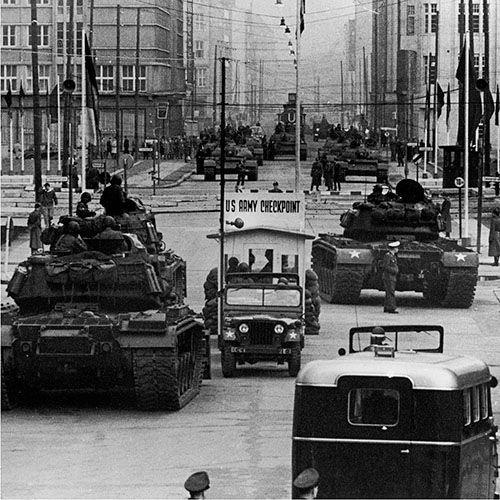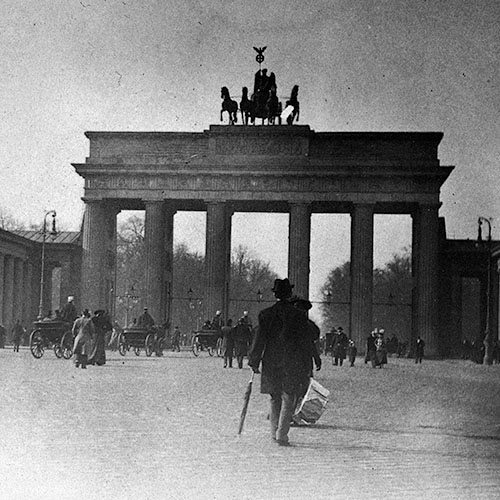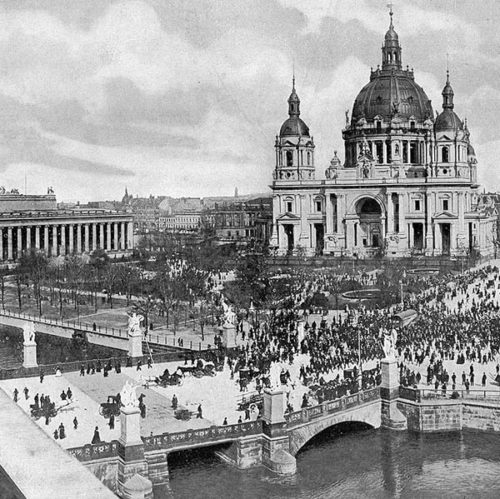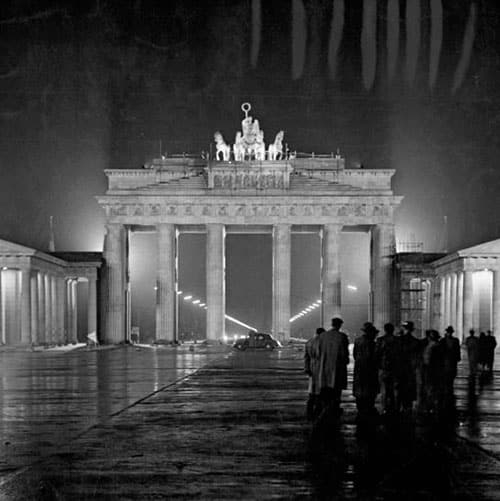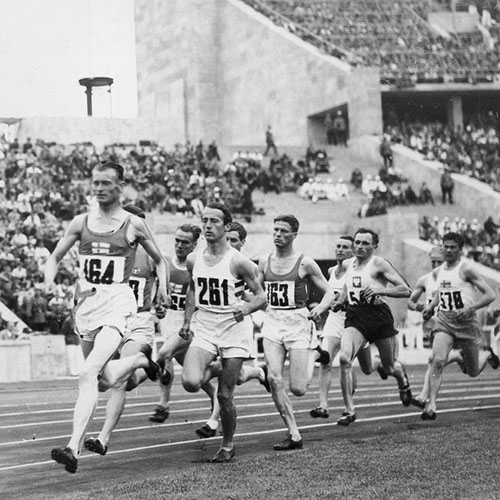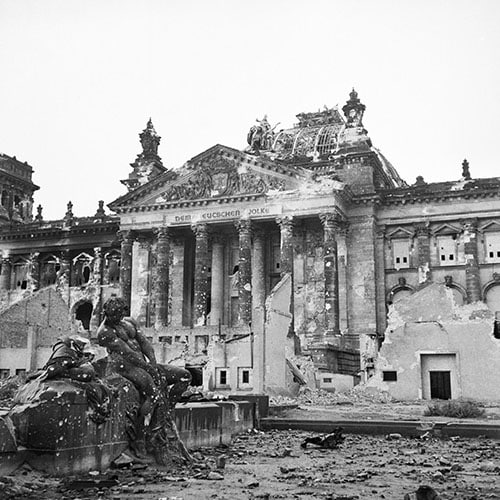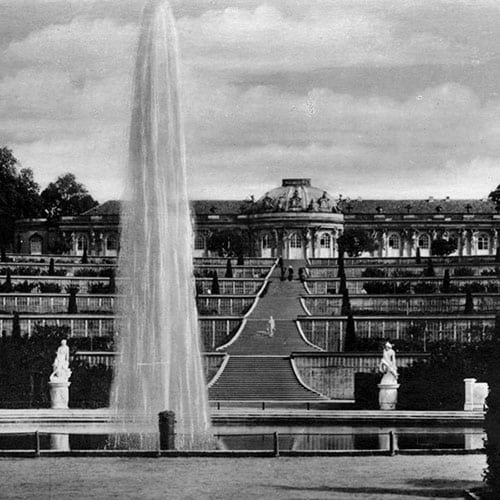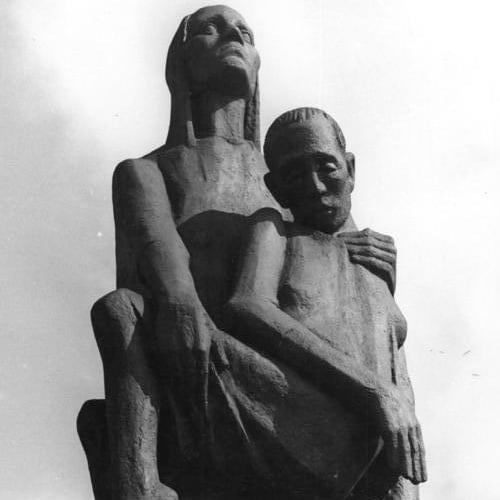“Democracy is for us not only a matter of the moment, but it is a matter of our historical legacy… The symbol of this path, with all its tragedy and all its failed attempts, is black-red-gold. We would be faithless to our own history if we were to abandon this symbol.”
Carlo Schmid, a key architect of the West German Basic Law (1948)
Before we unfurl the specific history of Schwarz-Rot-Gold, it’s worth remembering that flags are never just pieces of fabric. They are loaded symbols, visual shorthand for a nation’s entire history and aspirations.
A flag can inspire patriotic fervour, revolutionary zeal, or deep-seated resentment.
It represents a collective identity, a promise of belonging.
In the 19th century, as the very idea of the ‘nation-state’ was being forged in the fires of revolution and war across Europe, the question of a flag was paramount.
For the disparate collection of German-speaking kingdoms, duchies, and free cities, a flag was not just a nice-to-have accessory; it was the visual embodiment of a question that haunted the age:
What is Germany? And who gets to decide?
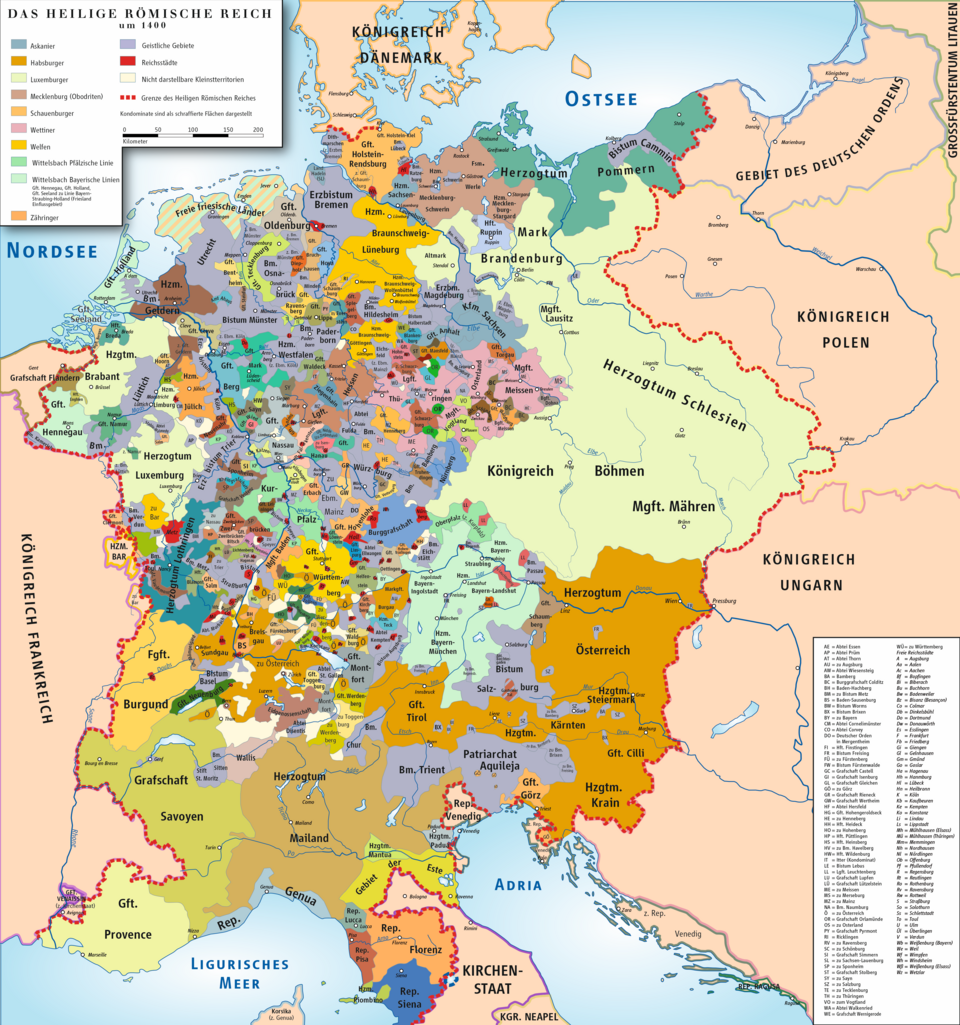
The answer, for a long time, was unclear.
Before the 19th century, there was no ‘German’ national flag because there was no unified Germany.
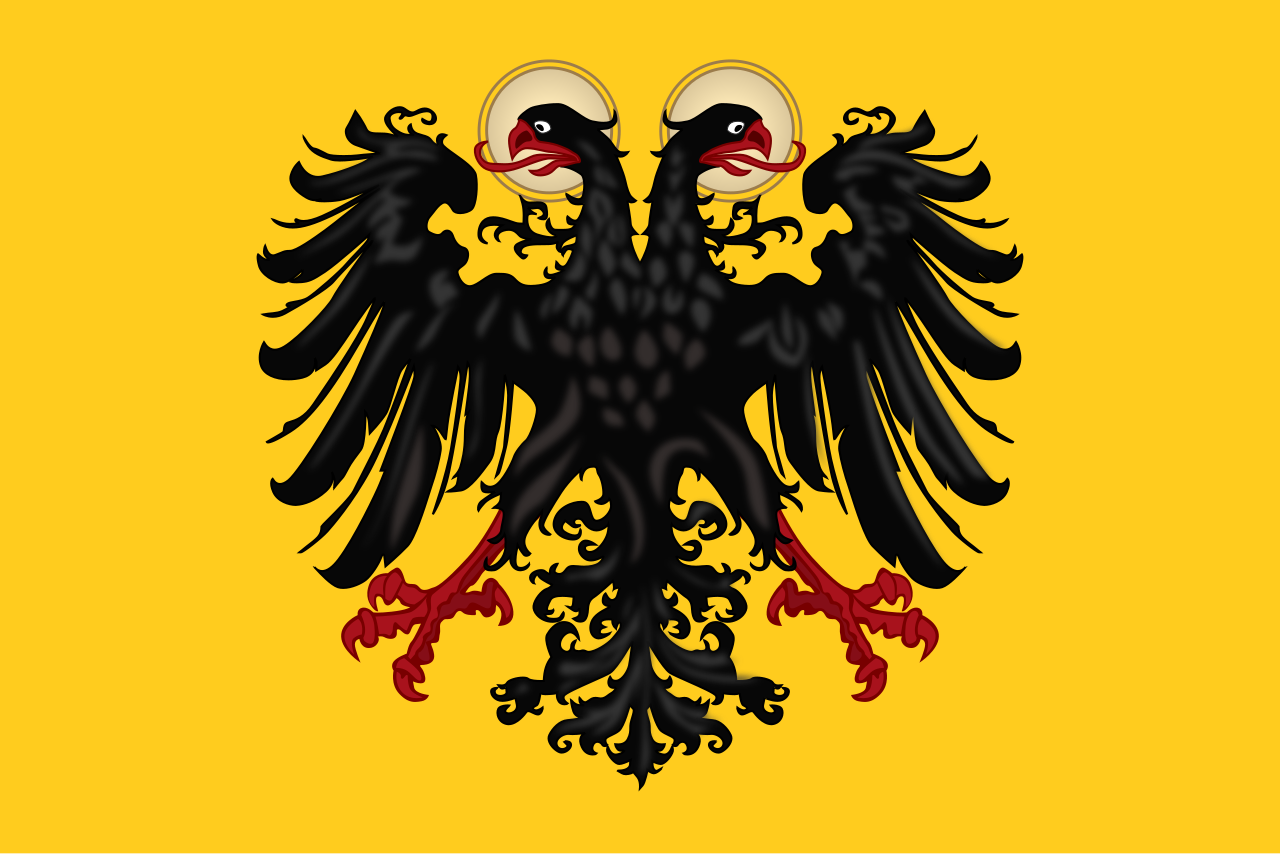
The Holy Roman Empire, a bewildering patchwork of territories that existed for a thousand years before its dissolution by Napoleon in 1806, had no national flag in the modern sense.
Its imperial banner featured a black eagle on a golden background, colours associated with the Emperor.
These imperial colours, black and gold, were ancient and august, but they represented the authority of the Emperor, not the sovereignty of a German people.
Red and white were also significant, often associated with the powerful Hanseatic League, a medieval confederation of merchant guilds and their market towns.
But a single flag to unite all German speakers?
The idea was as foreign as the French troops marching across their lands.
It took an invasion to spark a revolution, and a revolution to create a flag.
–
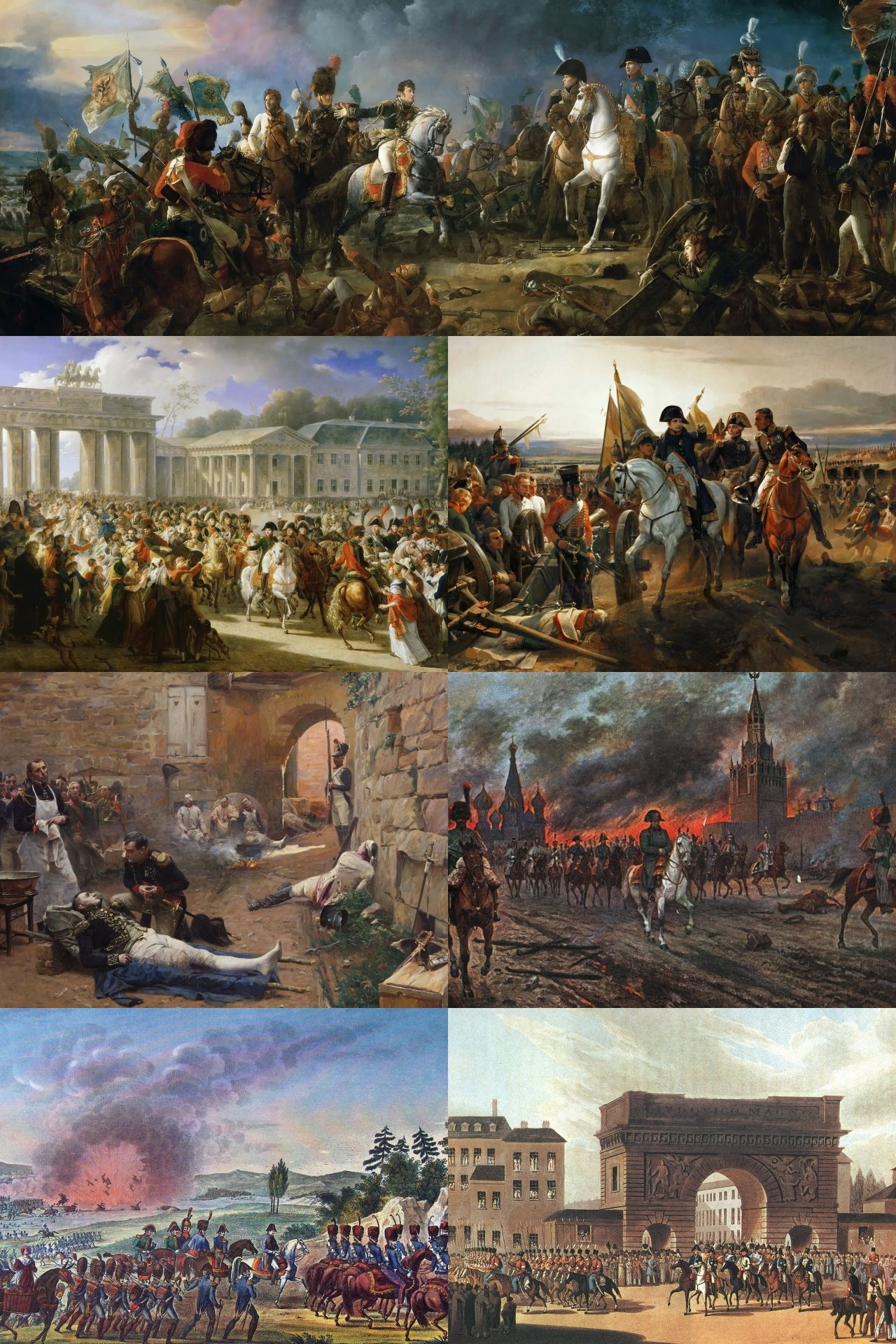
The Black-Red-Gold: A Revolutionary Birth
“Out of the blackness (black) of servitude through bloody (red) battles into the golden (gold) light of freedom.”
A popular saying from the time of the Napoleonic wars
The story of Schwarz-Rot-Gold begins, as so many modern German stories do, with Napoleon Bonaparte.
His conquest and reorganisation of the German lands at the start of the 19th century had a paradoxical effect. While it dismantled the old Holy Roman Empire, it also ignited a powerful new feeling of common identity among German speakers in opposition to their French occupiers.
This burgeoning nationalism needed a symbol, and it found one in the uniforms of a legendary volunteer unit: the Lützow Free Corps.
Formed in 1813 during the “Wars of Liberation” against Napoleon, the Lützow Free Corps was a motley crew of students, academics, and artisans drawn from all across the German states, united in their desire to expel the French.
Because its volunteers came from different regions with their own military attire, creating a standardised uniform was a challenge.
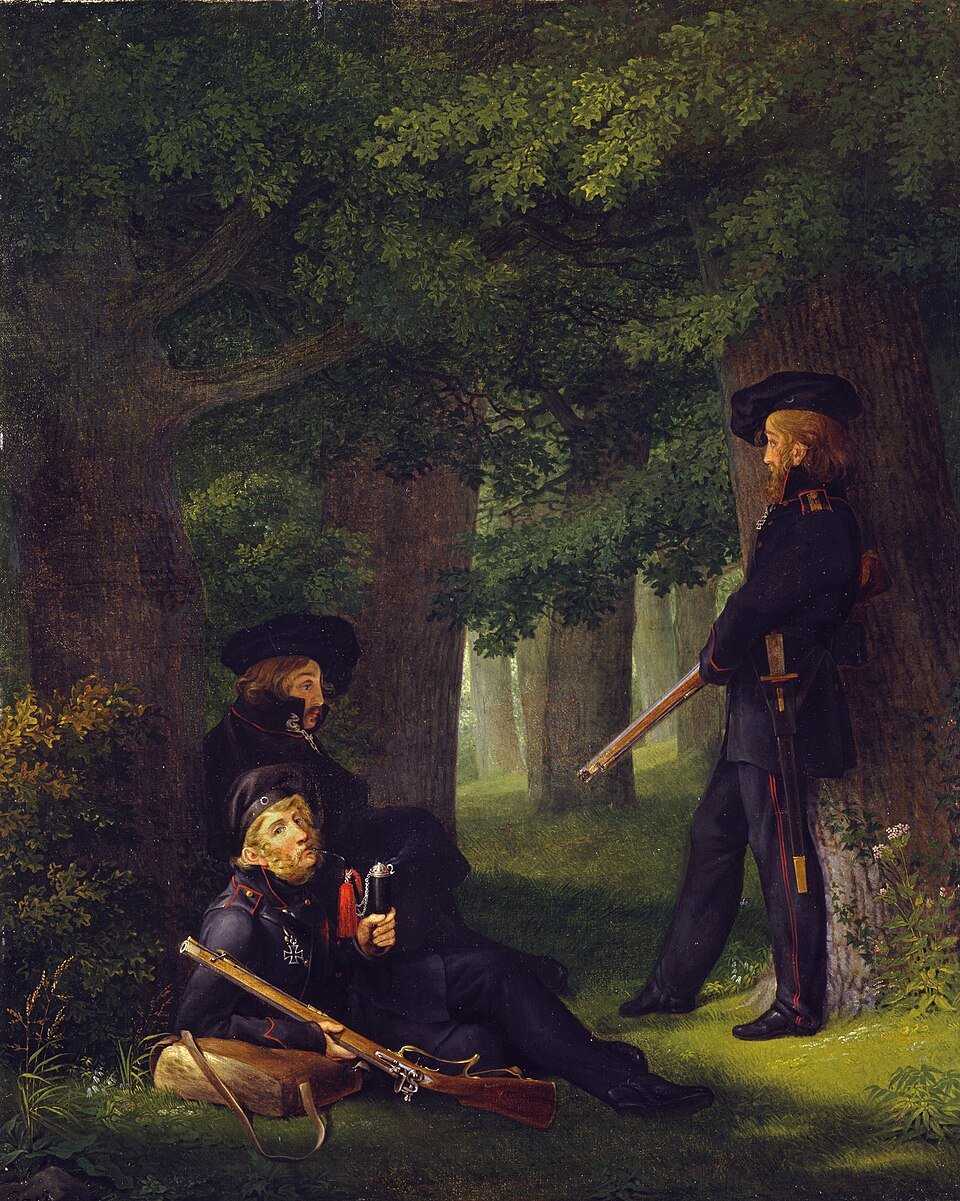
Major Adolf von Lützow, their charismatic leader, opted for a practical solution: dye all the uniforms black. It was the cheapest and easiest way to create uniformity from diversity.
The uniforms were then adorned with red facings and piping, and finished with shiny, golden-coloured brass buttons.
Black uniforms, red trim, gold buttons. A colour combination born not of grand symbolism, but of pragmatism.
Yet, it was this very group, representing a pan-German fighting force, that captured the popular imagination.
The colours of the Lützow Free Corps became synonymous with the fight for a united and free Germany.
After Napoleon’s defeat, the dream of a unified German nation-state was swiftly quashed.
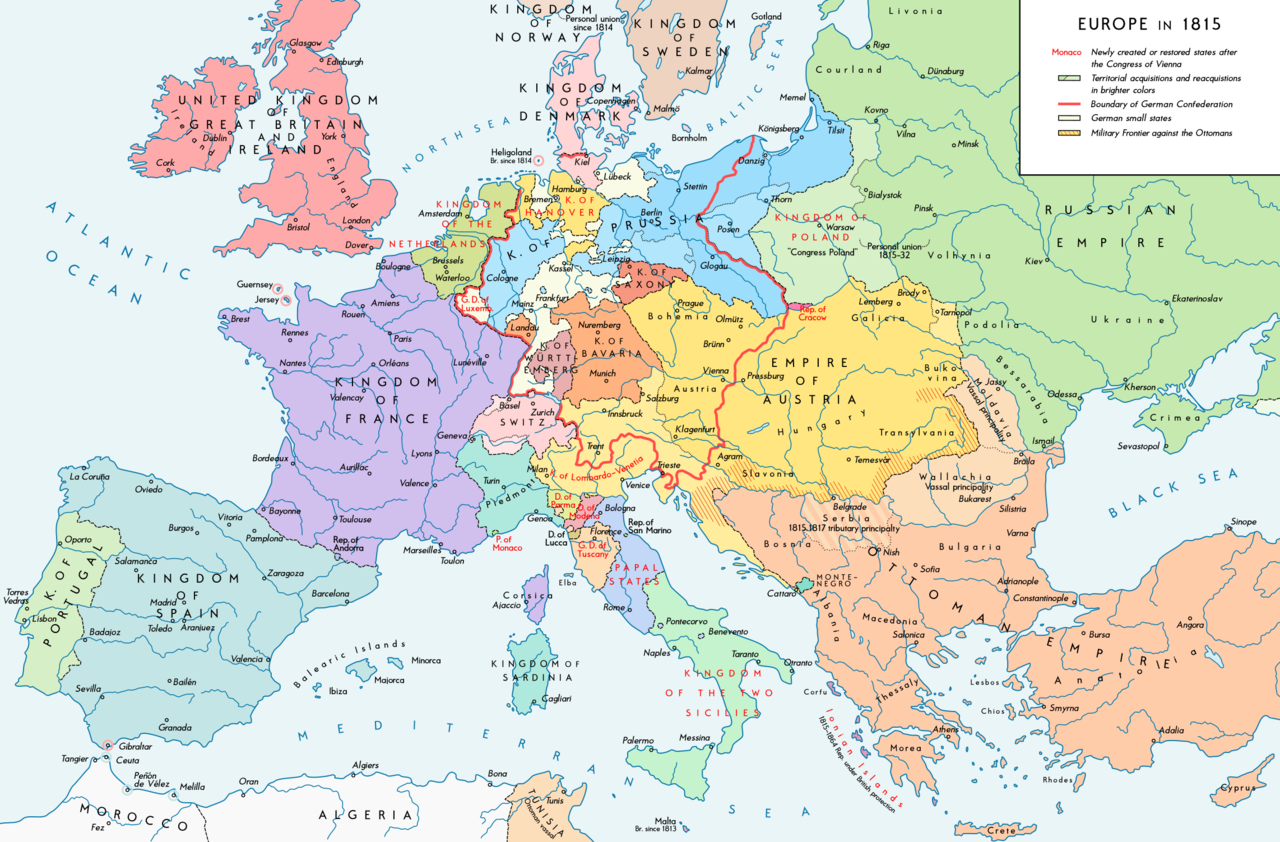
The 1815 Congress of Vienna established the German Confederation, a loose and conservative association of 39 sovereign states dominated by Austria, designed to maintain the old monarchical order.
For the young, liberal, and nationalist students—many of them veterans of the Free Corps—this was a bitter disappointment. They had fought for a nation and been given a committee.
Their frustration found an outlet in the burgeoning Burschenschaften, student fraternities that became hotbeds of liberal and nationalist sentiment.
In 1815, a fraternity in Jena, the Urburschenschaft, which included Lützow veterans, adopted a flag with red and black horizontal stripes and a golden oak branch emblem.
These colours quickly spread.
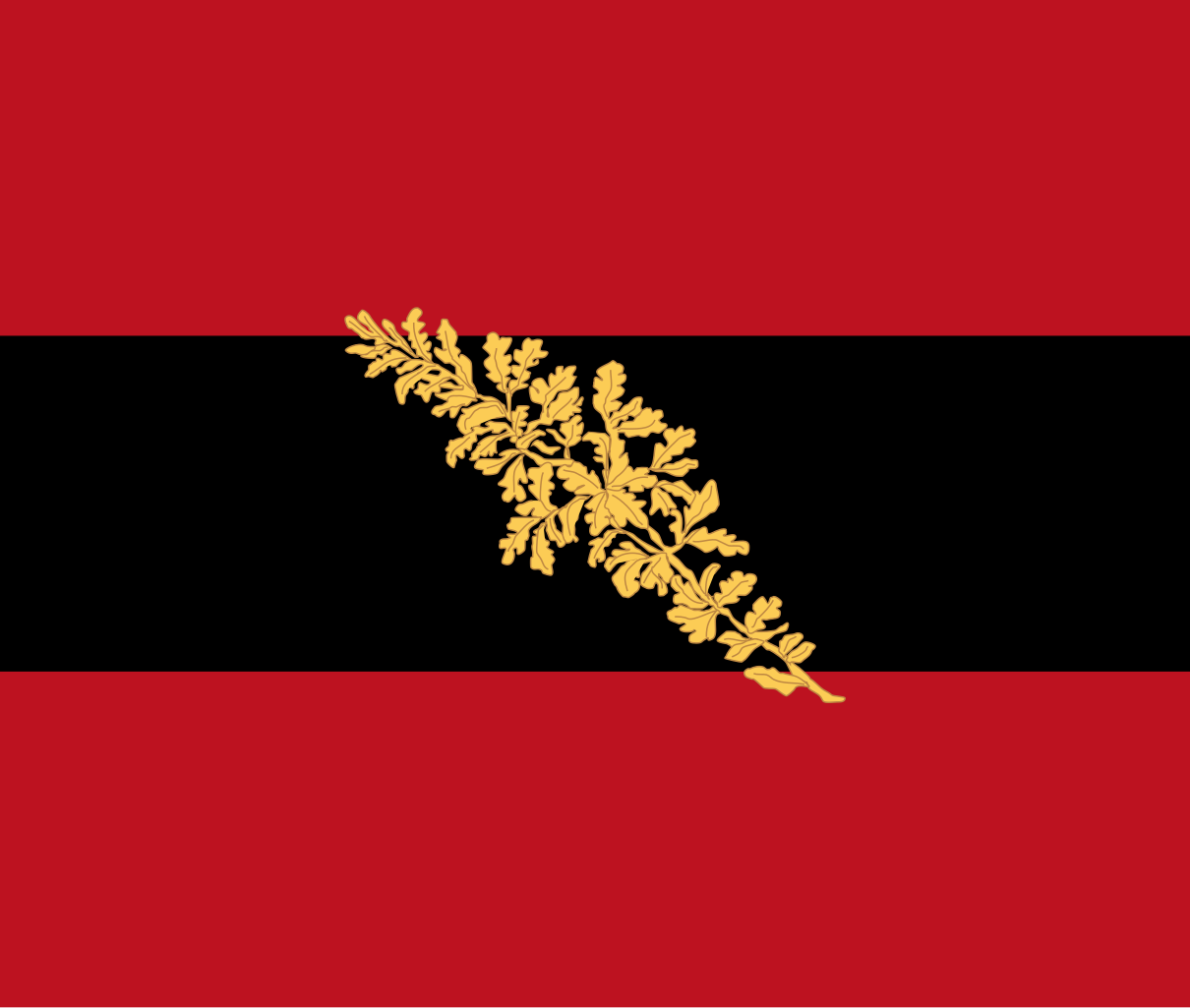
At the 1817 Wartburg Festival, a landmark gathering of students demanding unity and constitutional rights, a black-red-gold banner was proudly displayed.
The colours had found their cause: the liberal, democratic, and nationalist movement pushing against the conservative order. This association was cemented at the Hambach Festival in 1832. Disguised as a county fair to circumvent restrictions on political gatherings, it was a massive demonstration of around 30,000 people demanding national unity, freedom of the press, and civil rights.
The festival grounds were a sea of black, red, and gold flags.
One of the most prominent flags, carried by Johann Philipp Abresch, bore the inscription “Deutschlands Wiedergeburt” (Germany’s Rebirth).
The colours were no longer just a memory of a military uniform; they were the banner of a future, democratic Germany.
The breakthrough moment came with the Revolutions of 1848.
As liberal uprisings swept across the German states, the tricolour was everywhere.
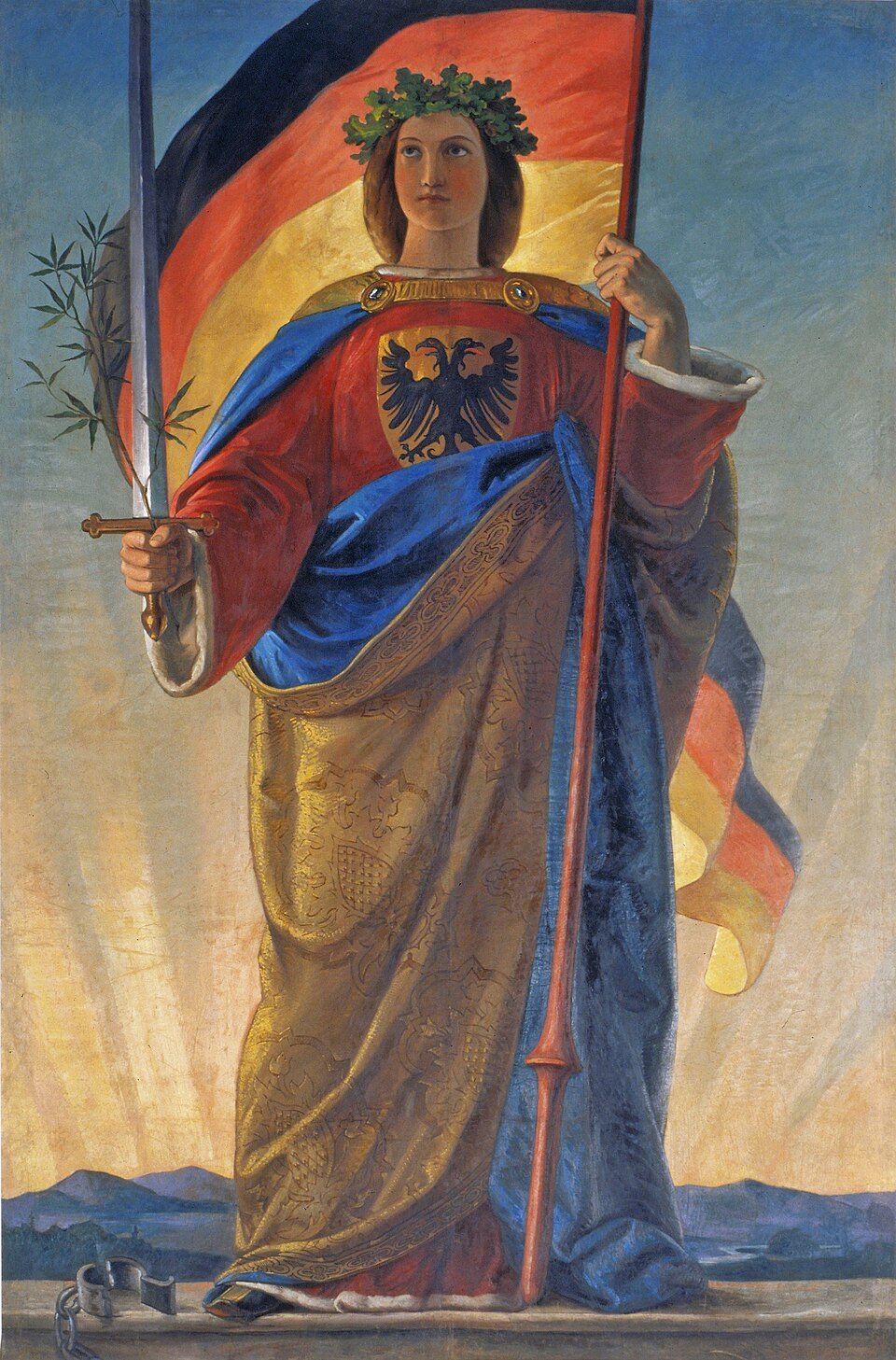
On March 9th 1848, the German Confederation’s Bundestag, panicking in the face of popular pressure, officially adopted the black-red-gold as the colours of the German Confederation.
Shortly after, the newly elected German National Assembly, the Frankfurt Parliament, reaffirmed these as the national colours for the new German Empire it intended to create.
For a brief, shining moment, the revolutionaries’ flag was the official flag of Germany.
It was during this period that the romantic interpretation—”out of the blackness of servitude, through red blood, to the golden light of freedom”—gained currency. It was a powerful piece of political poetry, retroactively applying a heroic narrative to the colours. While not their origin, this interpretation helped cement their symbolic power in the public consciousness.
However, the revolution failed.
The dream of a unified, liberal Germany was crushed by the old monarchical powers, primarily Prussia.
The Frankfurt Parliament was dissolved, and the black-red-gold flag, the symbol of the failed revolution, was suppressed.
–

The Black-White-Red: A Rival Identity
“I don’t care whatsoever about those colors! Whatever, green and yellow and dancing pleasure, or the flag of Mecklenburg-Strelitz…”
Otto von Bismarck on the creation of the Black-White-Red flag
As the revolutionary embers of 1848 faded, the task of unifying Germany fell not to liberal parliamentarians, but to the iron-willed chancellor of Prussia, Otto von Bismarck. Bismarck was a pragmatist, a conservative, and a monarchist. He had no romantic attachment to the black-red-gold flag, which he associated with the liberal opposition that he had so effectively outmaneuvered.
When Bismarck created the North German Confederation in 1867, a precursor to the German Empire, a new flag was needed. The choice was a calculated political move.
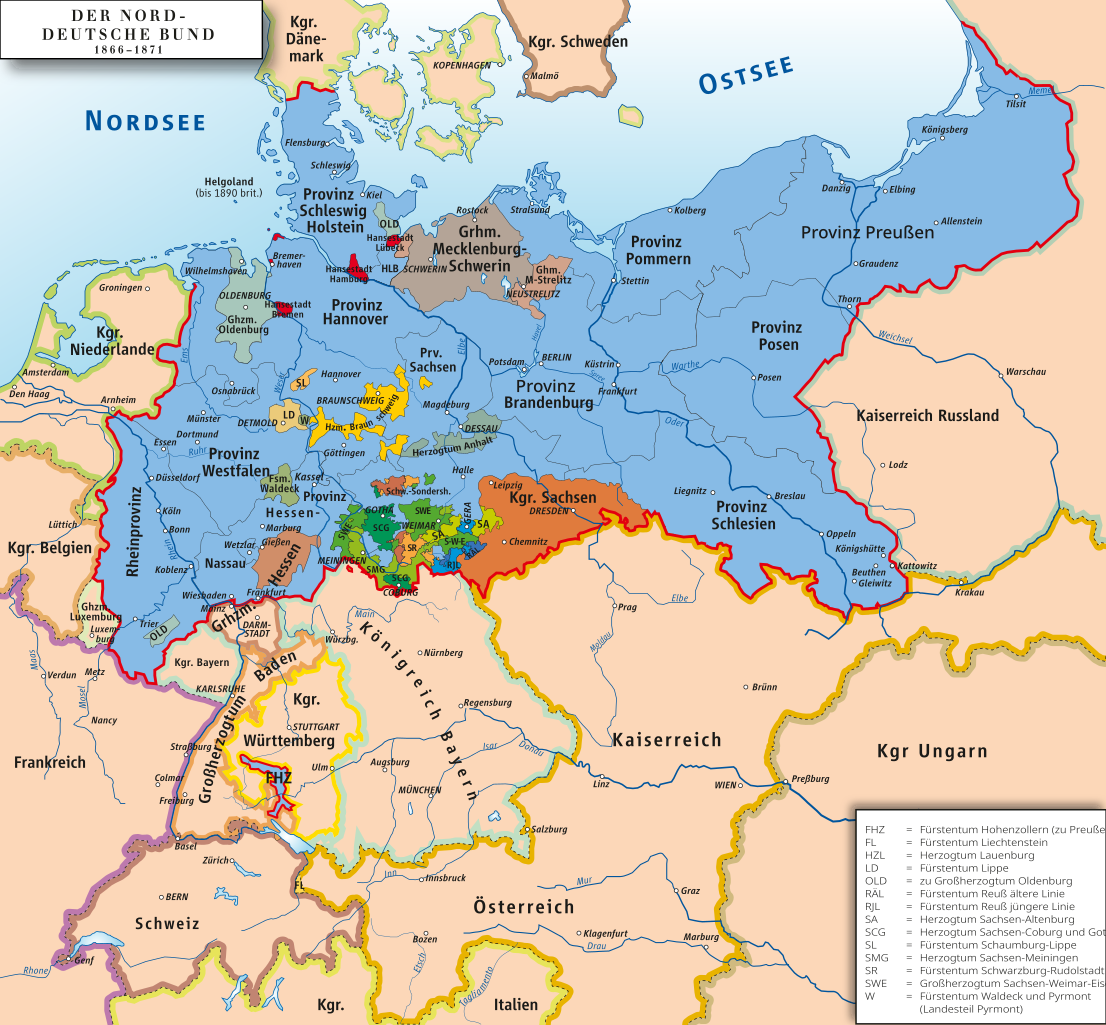
The new tricolour combined the black and white of Prussia with the red and white of the Hanseatic cities (like Hamburg, Bremen, and Lübeck).
The result was a horizontal tricolour of black, white, and red.

This new flag was a symbol of a very different kind of Germany. It was not born from a popular democratic movement but imposed from above. It represented a Germany unified by Prussian military might and industrial prowess, a constitutional monarchy, not a liberal republic.
It was the flag of the Kaiserreich, the German Empire proclaimed in the Hall of Mirrors at Versailles in 1871.
For nearly fifty years, Schwarz-Weiß-Rot was the flag of Germany. The revolutionary Schwarz-Rot-Gold did not disappear entirely, but it became the banner of opposition, used by parties and groups who clung to the democratic ideals of 1848.
Germany now had two competing flag traditions, each representing a different vision of the nation.
–
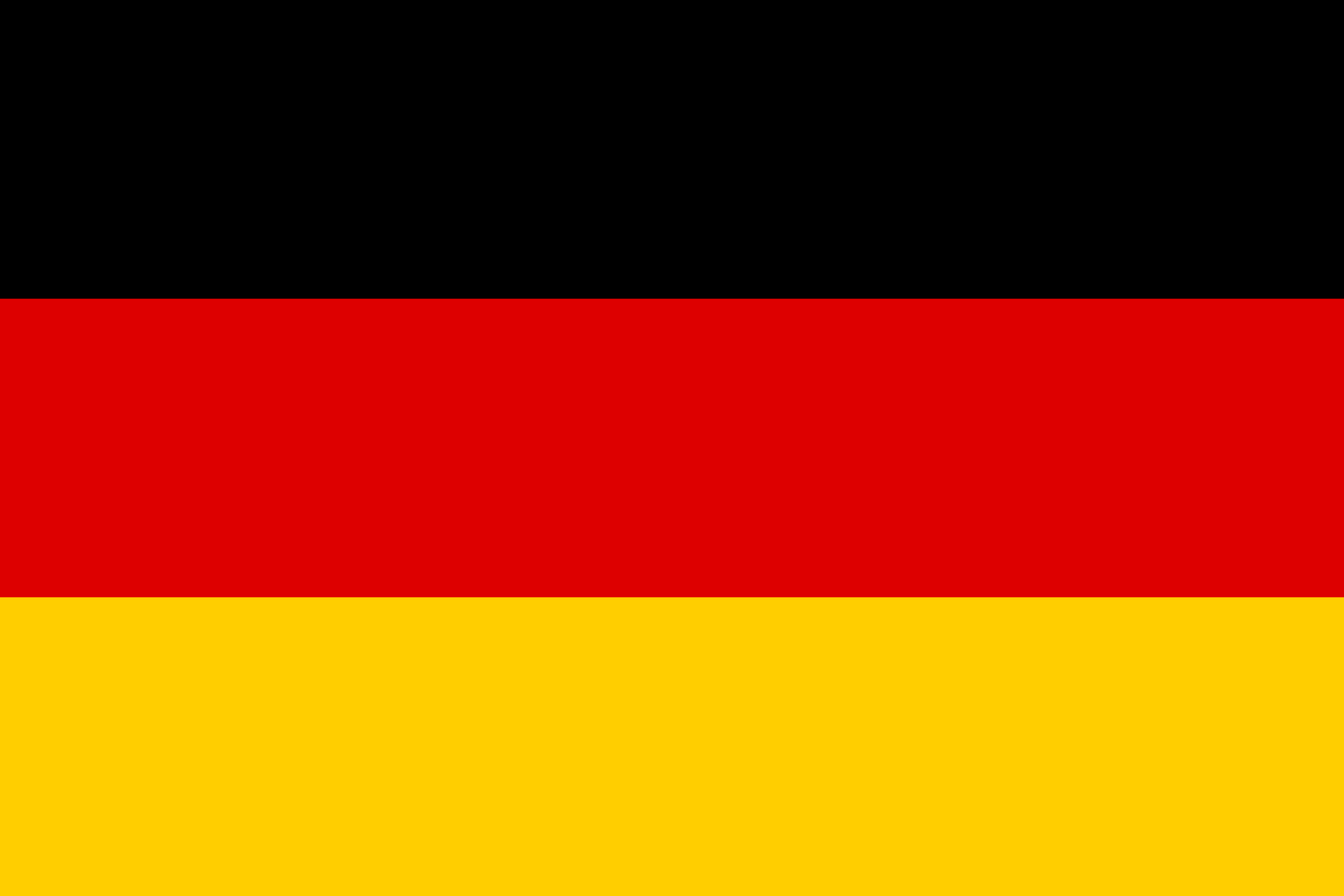
The Weimar Republic and the 'Flag Dispute'
“And when at last he waved the black-red-gold banner, and predicted to a free German nation a magnificent future, enthusiasm without bounds broke forth… In a moment the city was covered with black, red, and gold flags.”
Carl Schurz, 1848 Revolutionary and later U.S. Statesman
Germany’s defeat in World War I and the subsequent revolution of 1918-19 swept away the monarchy.
In its place rose the Weimar Republic, Germany’s first democratic state.
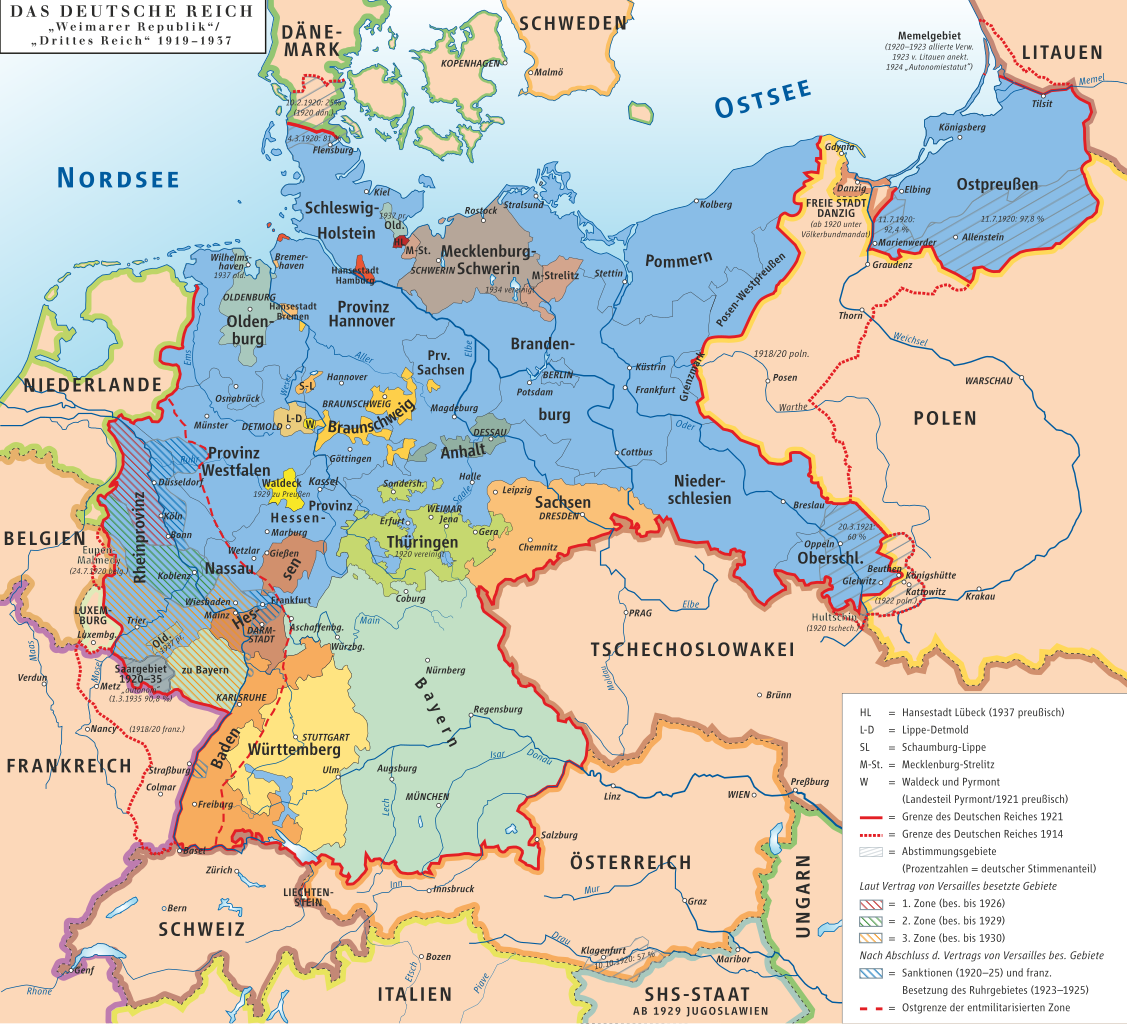
One of the new republic’s first and most contentious decisions was to choose a national flag.
To the founders of the republic—the Social Democrats, the Centre Party, and the liberal Democrats—the choice was obvious. They needed to reclaim the democratic tradition. In 1919, the Weimar Constitution officially reinstated the black-red-gold tricolour as the national flag of Germany.
It was a deliberate link back to the failed revolution of 1848 and its liberal ideals.
This decision was anything but universally popular. The “flag dispute” (Flaggenstreit) that ensued tore at the fabric of the young republic. To the political right—the monarchists, the nationalists, and the conservative old guard—the black-red-gold was a symbol of national humiliation. They associated it with the defeat of 1918 and the hated Treaty of Versailles.
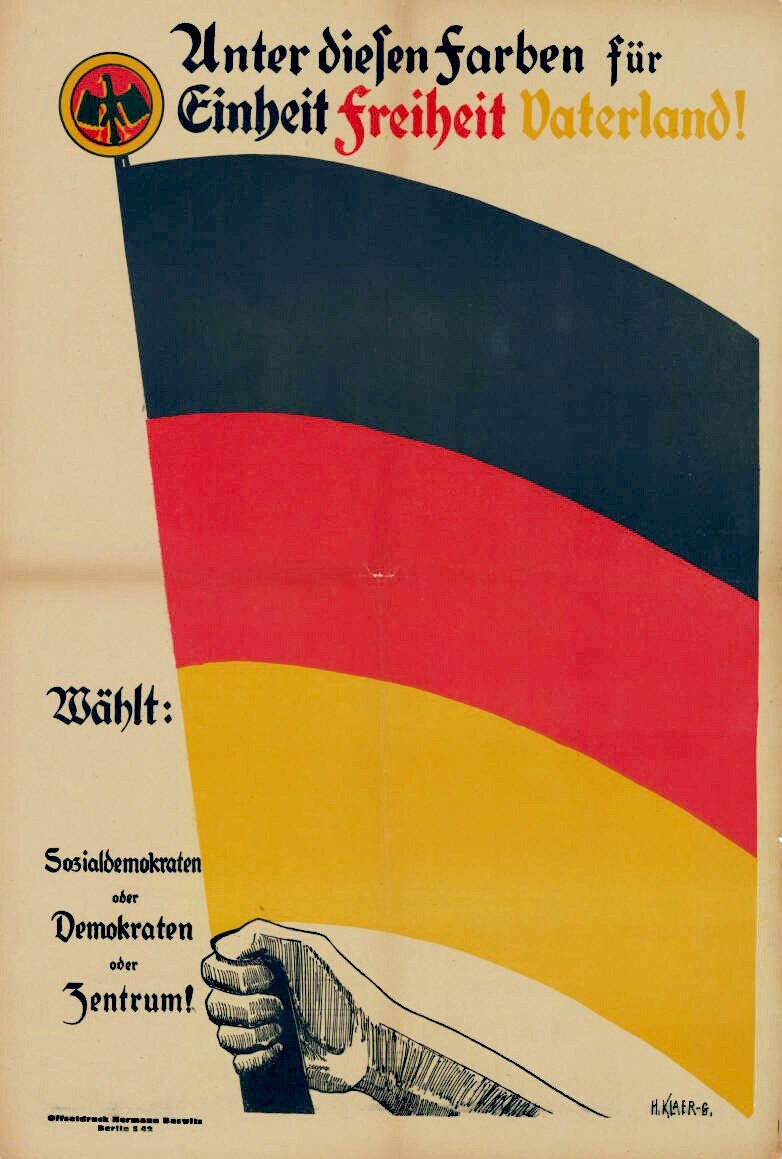
One of the new republic’s first and most contentious decisions was to choose a national flag.
To the founders of the republic—the Social Democrats, the Centre Party, and the liberal Democrats—the choice was obvious. They needed to reclaim the democratic tradition. In 1919, the Weimar Constitution officially reinstated the black-red-gold tricolour as the national flag of Germany.
It was a deliberate link back to the failed revolution of 1848 and its liberal ideals.
This decision was anything but universally popular. The “flag dispute” (Flaggenstreit) that ensued tore at the fabric of the young republic. To the political right—the monarchists, the nationalists, and the conservative old guard—the black-red-gold was a symbol of national humiliation. They associated it with the defeat of 1918 and the hated Treaty of Versailles.
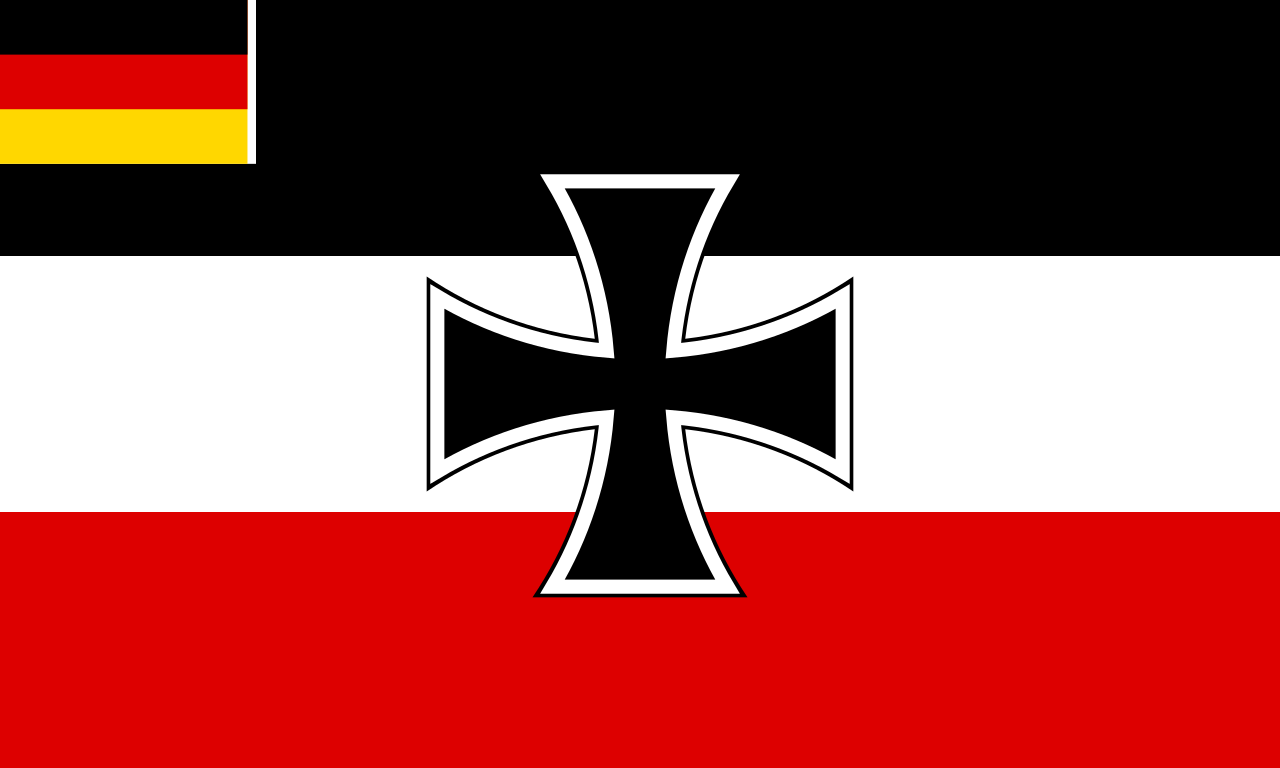
For them, the black-white-red of the empire represented Germany’s era of strength and glory. They derisively referred to the new flag’s colours as Schwarz-Rot-Gelb (black-red-yellow) or even Schwarz-Rot-Senf (black-red-mustard), a subtle but potent insult that stripped the gold of its heraldic dignity.
This was not merely a debate about aesthetics; it was a battle over the soul of the nation. Right-wing parties and paramilitary groups like the Stahlhelm continued to use the imperial colours as a symbol of their opposition to the democratic republic.
The republic’s supporters, in turn, rallied under the Schwarz-Rot-Gold, forming organizations like the Reichsbanner Schwarz-Rot-Gold to defend democracy against its extremist enemies.
The flag became a clear dividing line in a deeply polarised society. A compromise in 1922 allowed the old imperial flag to be used by diplomatic missions abroad, but this did little to heal the rift.
–
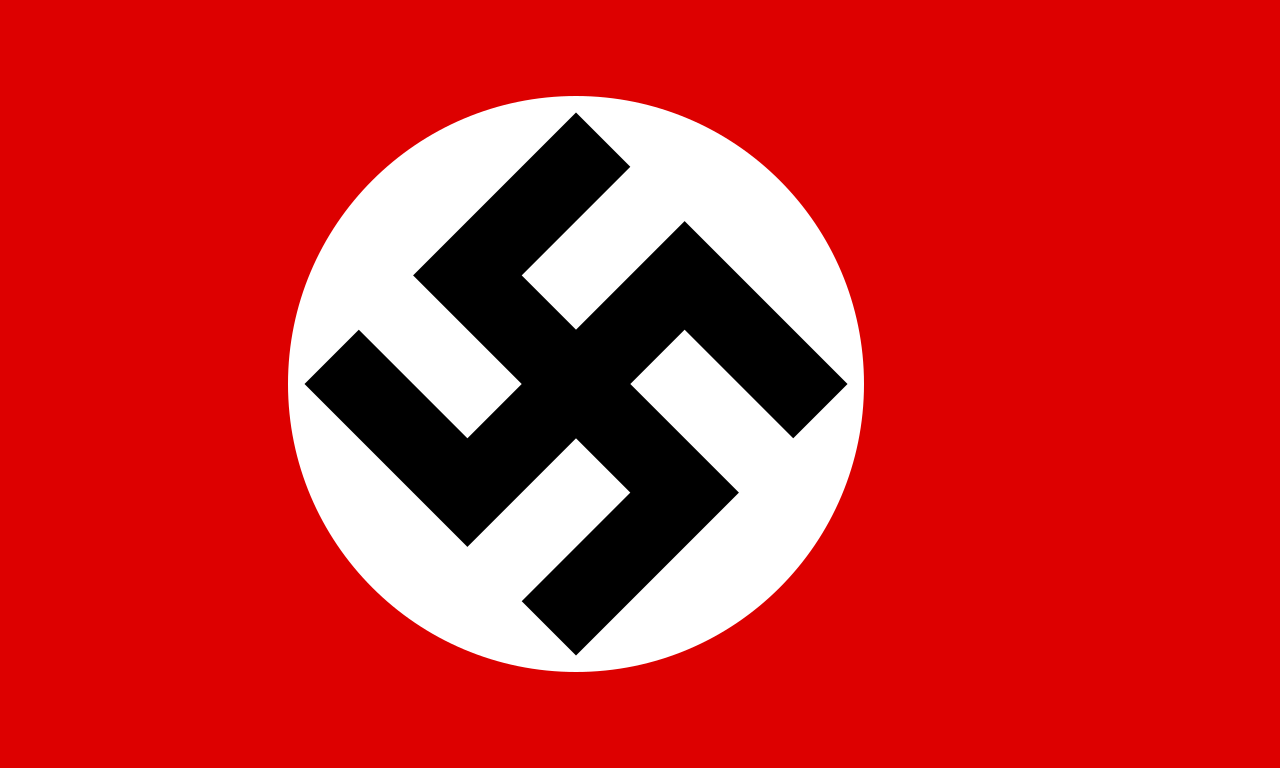
The Swastika and the Perversion of Colours
“In red we see the social idea of the movement, in white the nationalistic idea, in the swastika the mission of the struggle for the victory of the Aryan man.”
Adolf Hitler, in Mein Kampf
When Adolf Hitler and the Nazi Party came to power in 1933, they immediately sought to eradicate the symbols of the Weimar Republic.
On March 12th 1933, the black-red-gold flag was officially abolished.
Initially, the Nazis reinstated the old imperial black-white-red tricolour as the national flag, flying it alongside their own party banner, the swastika flag (Hakenkreuzflagge).
This was a clever move to appeal to the traditional conservatives and nationalists who longed for a return to the days of the empire.

In Mein Kampf, Hitler explained his design for the party flag, which deliberately co-opted the imperial colours. He claimed the red represented the social idea of the Nazi movement, the white represented the nationalist idea, and the black swastika symbolised the “mission of the struggle for the victory of the Aryan man.”
By using black, white, and red, the Nazis positioned themselves as the true heirs of the German imperial tradition, while simultaneously denouncing the democratic legacy of the black-red-gold.
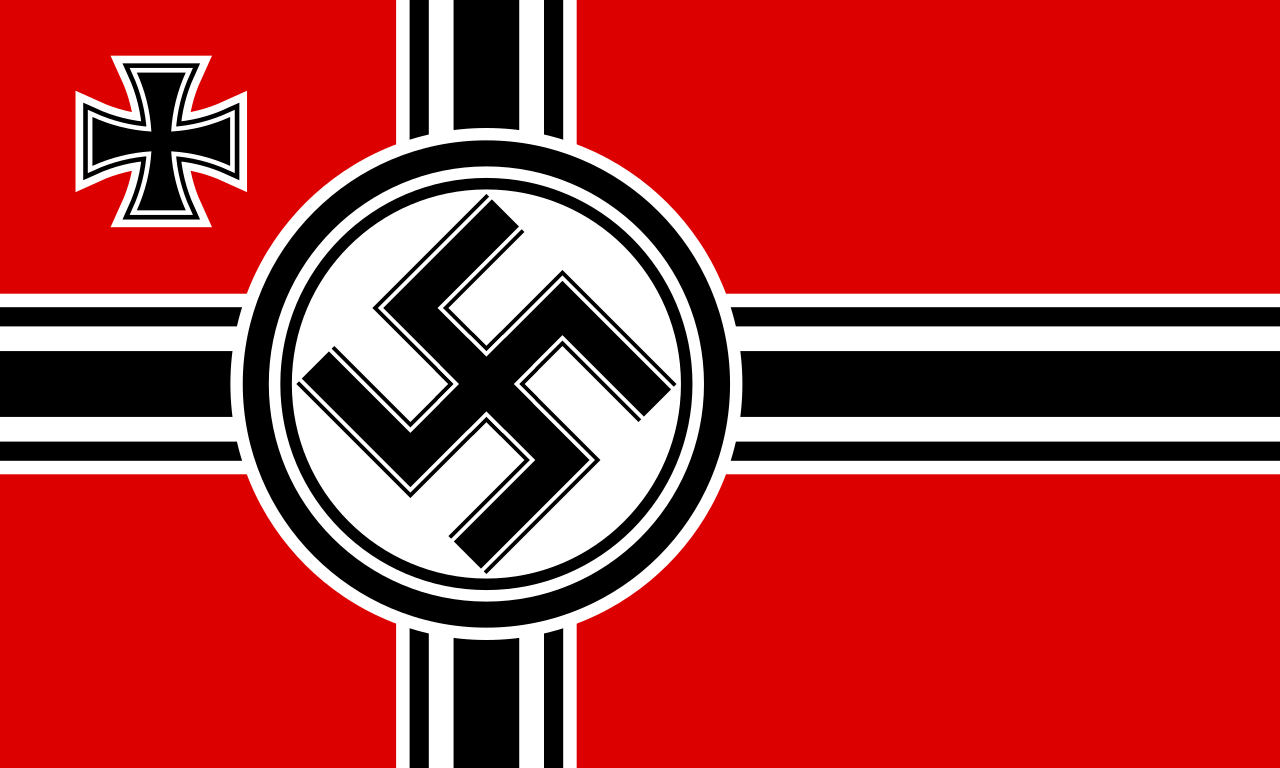
In 1935, a year after the death of President Hindenburg, the dual-flag arrangement ended. The Nazis banned the imperial flag, labelling it “reactionary,” and the swastika flag became the sole national flag of Germany.
The colours of the empire, once a symbol of monarchical conservatism, were now fully subsumed into the horrific iconography of the Third Reich.
–
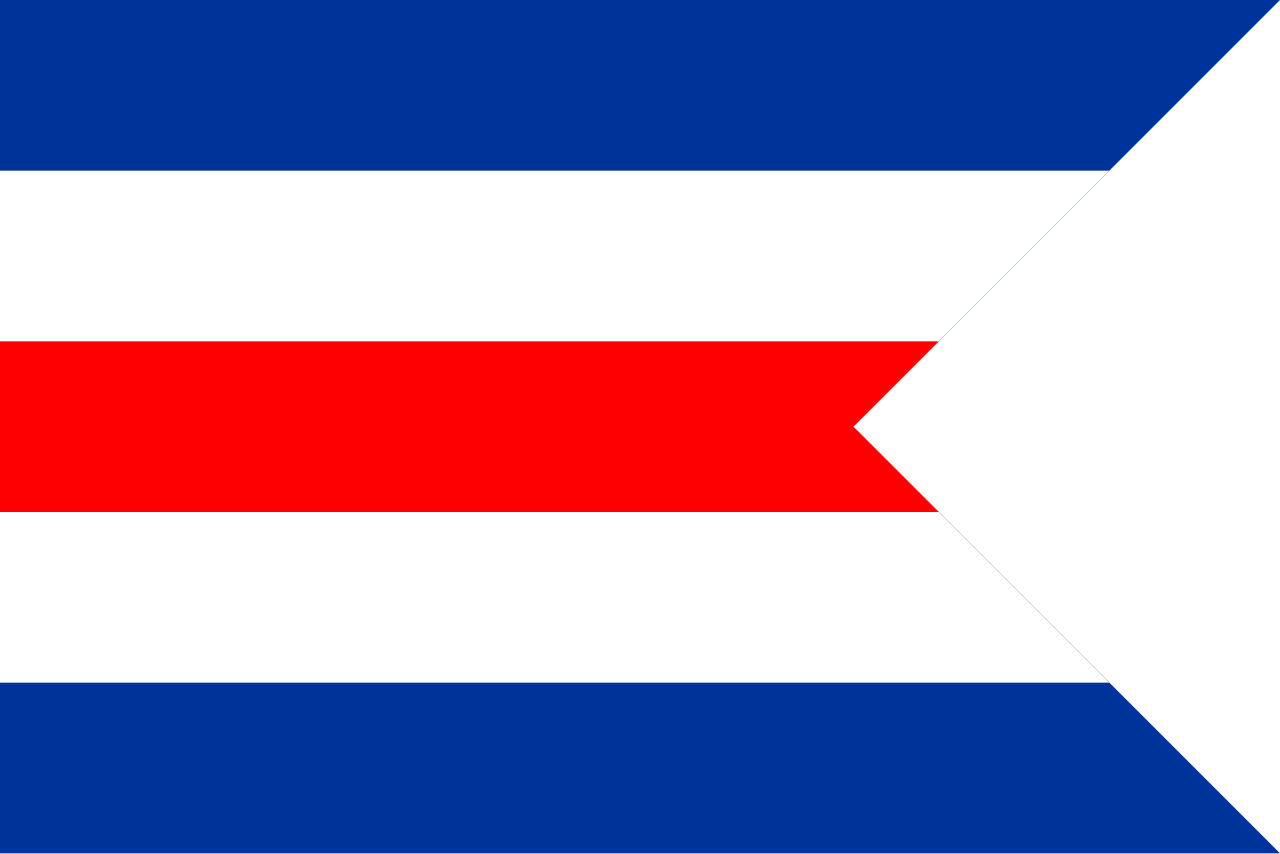
The Post-War Division and Reunification
“We didn’t want a new flag. We wanted the Germany that this flag originally promised. By cutting out the emblem of our oppressors, we were taking back the original symbol of unity and freedom for ourselves. It was an act of liberation.”
Bärbel Bohley, East German opposition artist and activist
After Germany’s total defeat in 1945, all previous national flags were banned by the Allied occupation forces.
As two new German states emerged from the ashes of the Cold War in 1949, they both faced the same question that had confronted the Weimar Republic: what should the flag be?
Remarkably, both the democratic Federal Republic of Germany (West Germany) and the communist German Democratic Republic (East Germany) chose the same colours.
Both states readopted the black-red-gold tricolour.
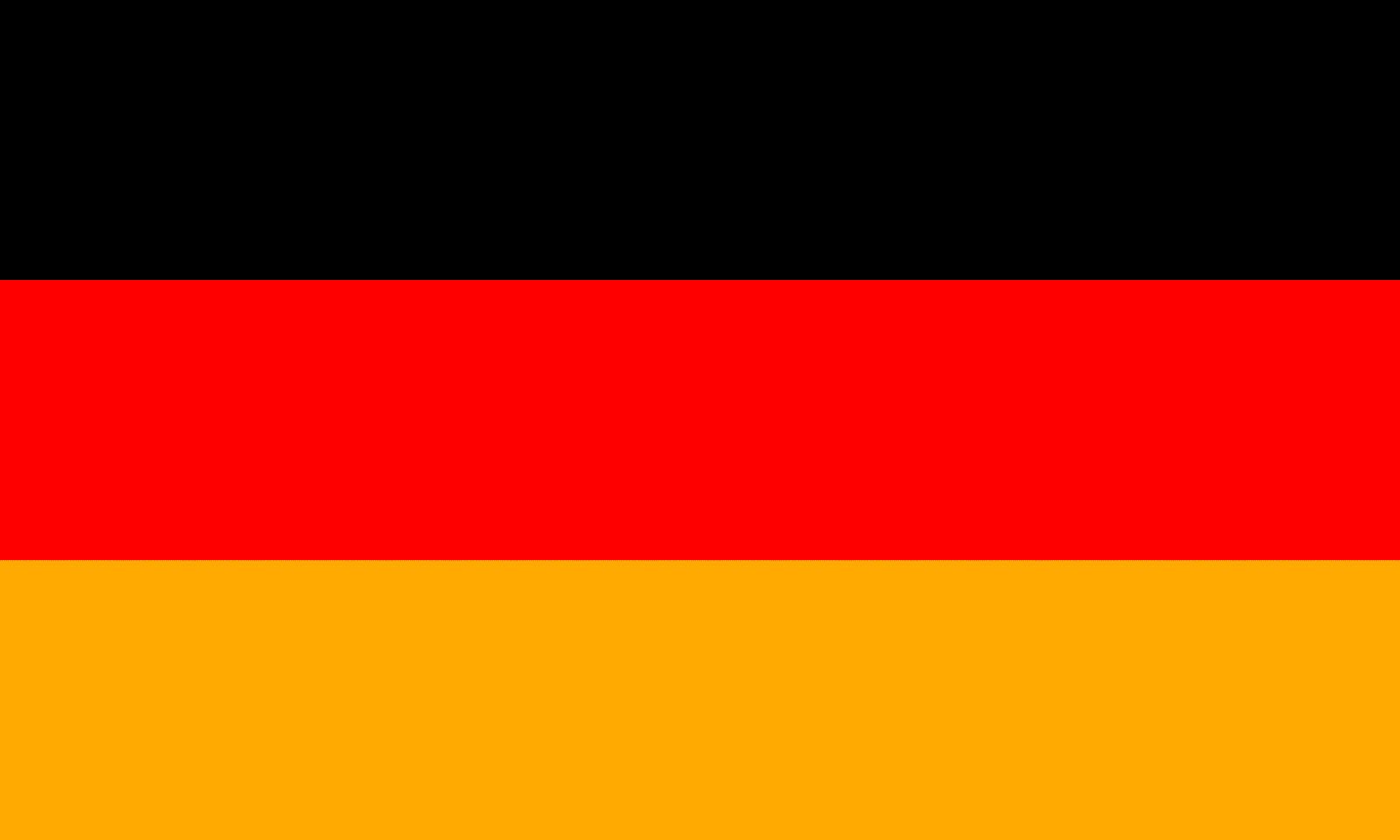
For West Germany, the choice was a conscious return to the democratic, liberal tradition of 1848 and the Weimar Republic.
Article 22 of the new Basic Law stated simply: “The federal flag is black, red, and gold.”
For East Germany, the choice was more complex. While also claiming to represent a true democratic tradition, their adoption of the colours was also a strategic move to position themselves as the legitimate German state.
For the first ten years, the flags of East and West Germany were identical.

In 1959, however, the GDR added its own socialist coat of arms—a hammer (representing the workers), a compass (representing the intelligentsia), and a wreath of corn (representing the farmers)—to the centre of its flag to distinguish it from the West.
For forty years, the two flags represented a divided nation. The simple tricolour flew in the West, a symbol of freedom and democracy, while the emblazoned tricolour flew in the East, a symbol of a separate socialist state.
The fall of the Berlin Wall in 1989 and the subsequent reunification of Germany in 1990 brought the story of the flag full circle. As the GDR crumbled, many East Germans defiantly cut the socialist emblem out of their flags, leaving a hole in the middle but restoring the pure black-red-gold tricolour of 1848.
It was a powerful, spontaneous symbol of their desire for unity and freedom.
On October 3rd 1990, the day of German reunification, the black-red-gold tricolour became, once again, the undisputed flag of a single, united, and democratic Germany.
–
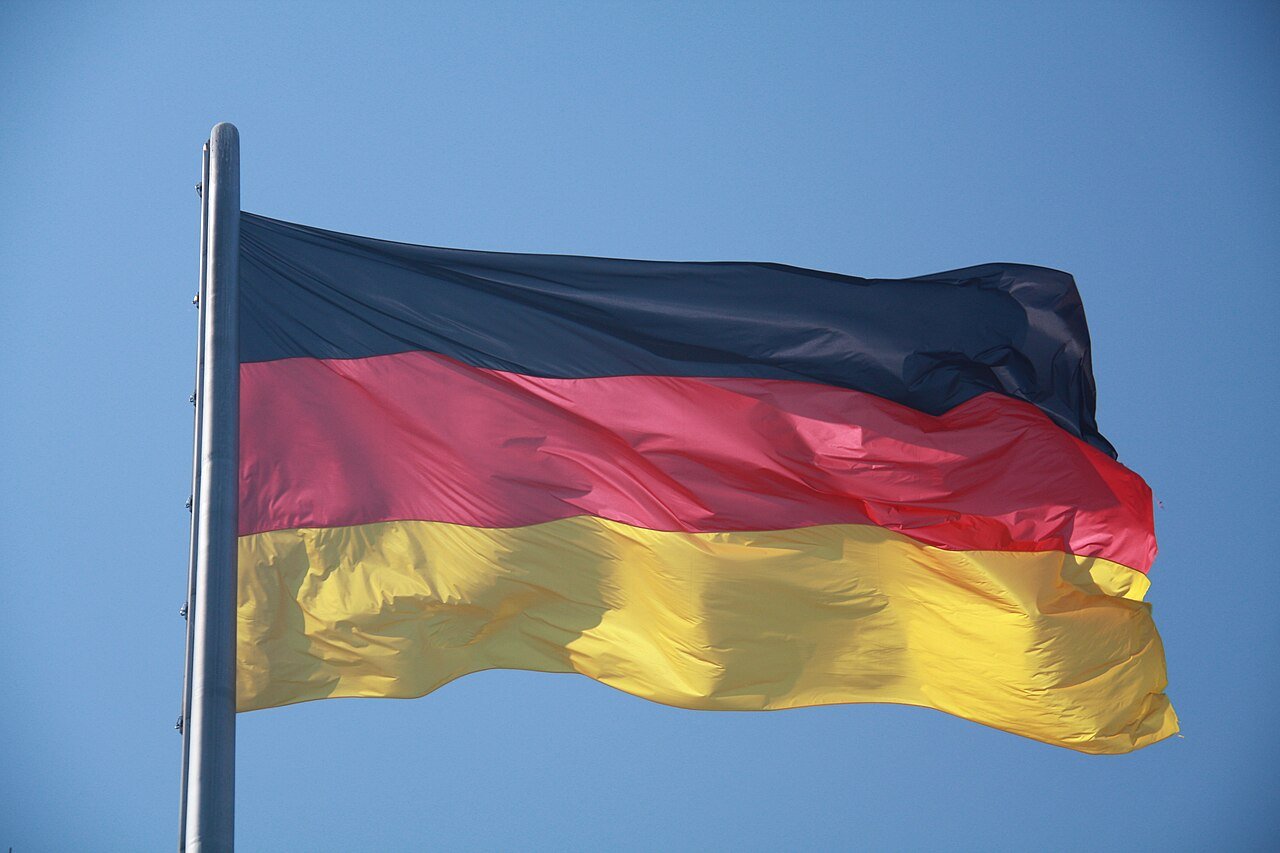
The Meaning of the Shades: It's Gold, Not Yellow
“Das ist das alte Reichspanier, / Das sind die alten Farben! / Pulver ist schwarz, Blut ist rot, / Golden flackert die Flamme!”
(This is the old imperial banner, / These are the old colours! / Gunpowder is black, Blood is red, / Golden flickers the flame!)
Ferdinand Freiligrath, Poet (1848)
One final, but crucial, point of contention throughout history has been the precise shade of the third stripe.
Officially and constitutionally, the colour is gold (Gold), not yellow (Gelb).
This distinction is not just pedantic; it is rooted in the heraldic tradition where gold (Or) is a distinct and more noble colour than yellow.
As mentioned, opponents of the Weimar Republic deliberately used the term ‘yellow’ as a form of political insult.
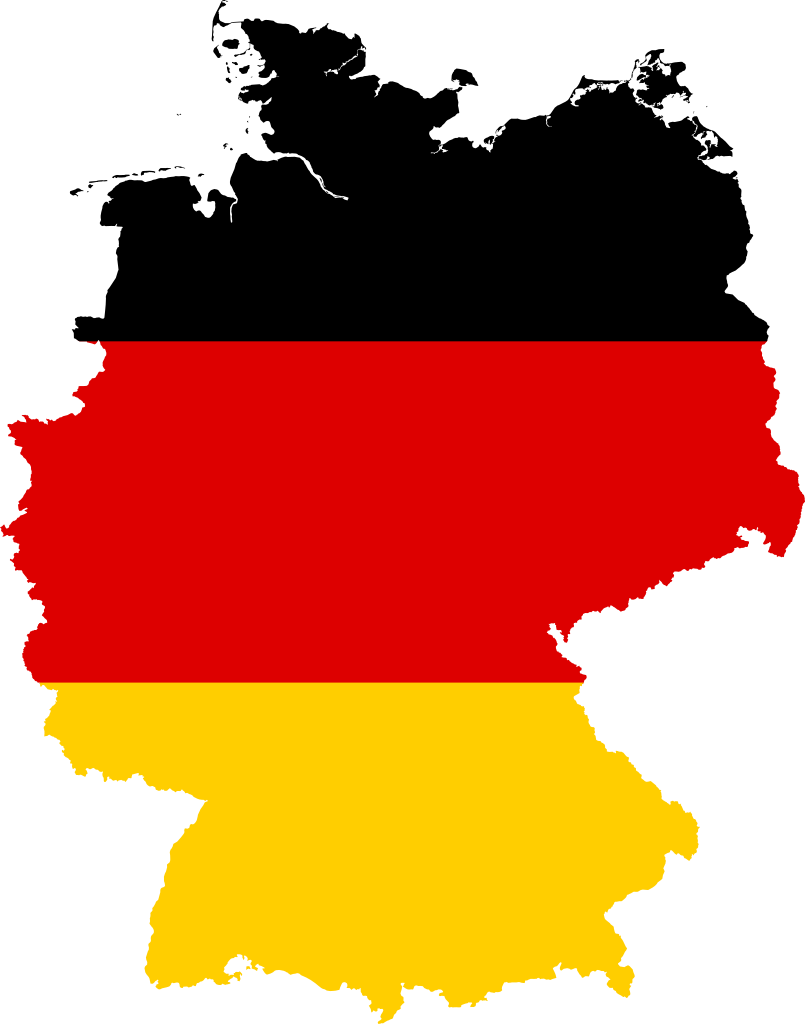
Today, the German government specifies the exact shades for the flag to ensure uniformity. While the visual difference might be subtle, the historical and symbolic difference is profound. The gold represents the preciousness of the freedom and unity that the flag symbolises.
The official specifications for the colours are precise, often defined using systems like RAL or Pantone. For example, the gold is a specific “custom mix,” while the red is a vibrant “traffic red.”
These technical details underscore the importance of the flag as a formal state symbol, a long way from the makeshift black-dyed tunics of Lützow’s volunteers.
–

Conclusion
“A new patriotism has emerged, a patriotism that is open to the world, friendly… When I see the black-red-gold flags, I see a country that has found its place, that has accepted its history and looks to the future with confidence.”
Joachim Gauck, former President of Germany and East German civil rights activist
So, what do the colours of the German flag symbolise? The simple, poetic answer—”out of blackness, through blood, to gold”—is not the origin story, but it is part of the flag’s acquired meaning, a layer of myth applied to a symbol that needed a heroic narrative.
The historical truth is that the colours of the German flag represent the journey of an idea: the idea of a unified, democratic, and free Germany.
They were born from the pragmatic necessity of a volunteer army fighting for national liberation.
They were adopted by students and liberals who dreamed of a nation built on constitutional rights, not monarchical decree.
They became the banner of Germany’s first, tragic attempt at a democratic revolution in 1848.
Suppressed and replaced by the authoritarian black-white-red of the German Empire, they became the colours of the democratic opposition. Reinstated by the Weimar Republic, they became a focal point of a bitter national conflict, despised by those who rejected democracy.
Banned by the Nazis, they were revived after the Second World War as a symbol of a Germany seeking to rebuild itself on democratic foundations.
For forty years, they represented a divided nation, before finally being embraced by a reunified country.
The colours black, red, and gold, therefore, do not have a single, static meaning.
They symbolise a process.
They represent the struggle for German democracy itself—a struggle that was long, often bloody, and fiercely contested. They are a reminder that national identity is not a given; it is forged, fought for, and defined by the symbols people choose to rally under.
Every time the Schwarz-Rot-Gold flies over Berlin, it tells a story not of a simple path from servitude to freedom, but of a complex, turbulent, and ultimately triumphant journey toward the very ideals it has come to represent.
***
If you’ve enjoyed reading this article, consider booking one of our private guided tours of Berlin.
Bibliography
Blackbourn, David. The Long Nineteenth Century: A History of Germany, 1780–1918. Oxford University Press, 1998.
Clark, Christopher. Iron Kingdom: The Rise and Downfall of Prussia, 1600–1947. Belknap Press, 2006.
Evans, Richard J. The Coming of the Third Reich. Penguin Books, 2004.
Fulbrook, Mary. A Concise History of Germany. Cambridge University Press, 2019.
Kitchen, Martin. A History of Modern Germany: 1800 to the Present. Wiley-Blackwell, 2011.
Rapp, Adolf. Der deutsche Gedanke: Seine Entwicklung im politischen und geistigen Leben seit dem 18. Jahrhundert. Rösl & Cie, 1920.
Schulze, Hagen. The Course of German Nationalism: From Frederick the Great to Bismarck, 1763–1867. Cambridge University Press, 1991.
Smith, Whitney. Flags Through the Ages and Across the World. McGraw-Hill, 1975.
HISTORICAL ARTICLES
Mythbusting Berlin

Are There Any Nazi Statues Left In Berlin? – Mythbusting Berlin
Visitors to Berlin often arrive expecting to find the physical remnants of the tyranny of the 20th century still standing – statues of dictators, triumphal arches, or bronze idols. Instead, they often find none. The stone symbols and statues of the Third Reich are still gazing down on them, however, hiding in plain sight. But why are there no statues of Hitler? Did the Allies destroy them all in 1945, or is the truth stranger
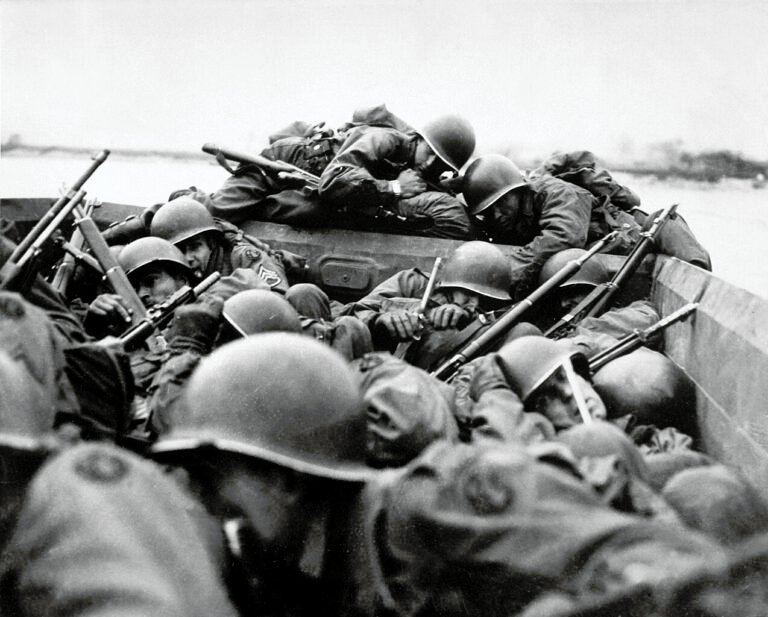
Could The Western Allies Have Captured Berlin? – Mythbusting Berlin
To contemplate a Western Allied capture of Berlin in 1945 is to challenge the established endgame of the Second World War. What was the true military and logistical feasibility of a Western Allied assault on the Nazi capital? What factors truly sealed Berlin’s fate, and what might have changed had the Allies pushed eastward?
Answering these questions means delving into the complex interplay of logistics, political maneuvering, and the competing visions for a post-war world
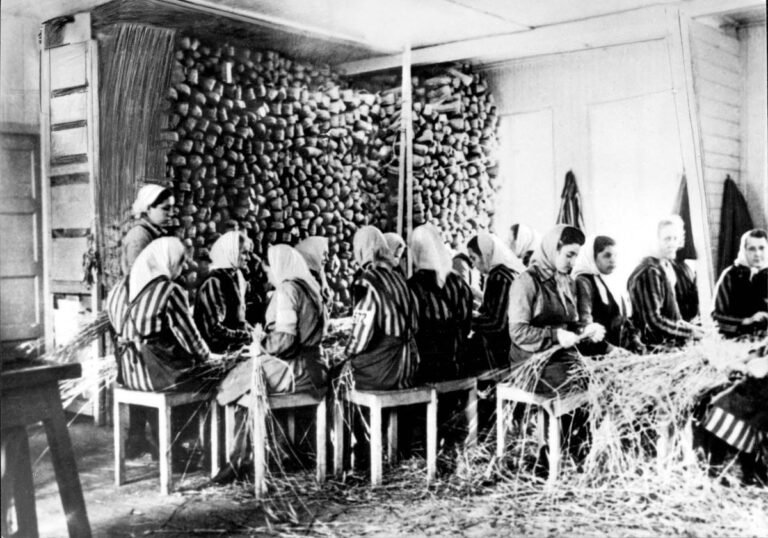
Did Any Of The Rothschild Dynasty Die In The Holocaust? – Mythbusting Berlin
The Rothschild name is synonymous with immense wealth, influence, and persistent conspiracy theories—especially during the era of Nazi Germany. Often targeted by antisemitic propaganda, the family’s survival during World War II has sparked myths about their supposed immunity from Nazi persecution. But did any Rothschild family member actually perish in the Holocaust? This article explores that compelling question, unraveling historical misconceptions and revealing the reality behind one of Europe’s most famous dynasties.
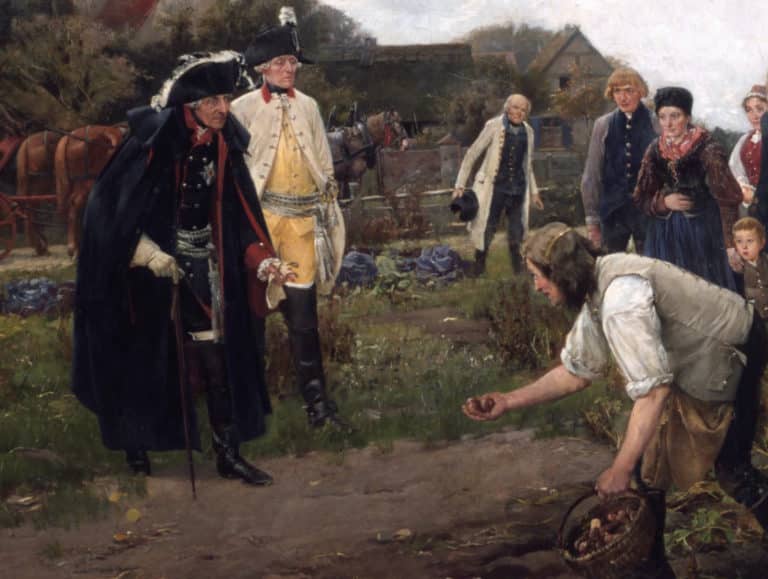
Did Frederick The Great Introduce The Potato To Germany? – Mythbusting Berlin
One of the more bizarre claims to fame attributed to the first King of Prussia is that the man who would go down in history known as Frederick the Great introduced the potato to Germany during his reign back in the 1700s. This starchy root vegetable has undoubtedly become a staple part of German cuisine – an essential addition to any plate of Schnitzel, Schweinshaxn, and Königsberger Klopse – however, whether Frederick the Great is
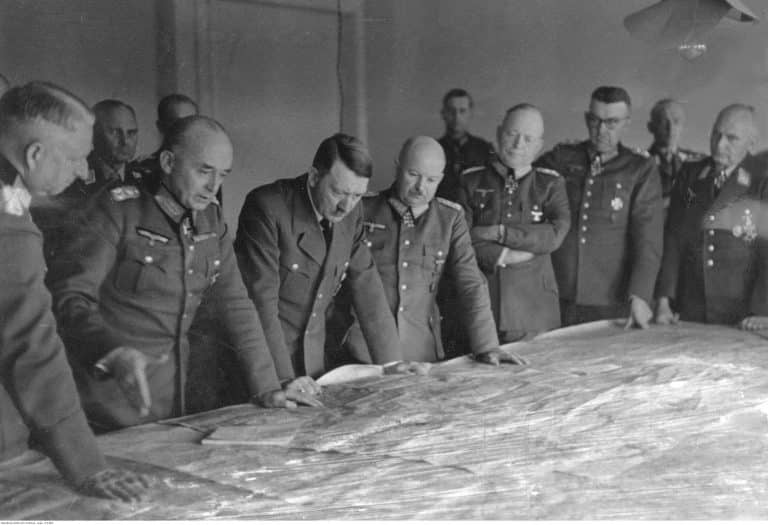
Did Hitler Escape To Argentina In 1945? – Mythbusting Berlin
Although Nazi leader, Adolf Hitler, certainly remains an inescapable figure, could there be any truth to the story of his escape to Argentina in 1945? That the most wanted man on earth could simply vanish, to spend the rest of his life peacefully in South American obscurity captivates imaginations. Yet, despite numerous investigations, this tale persists primarily as myth—fueled by speculation, hearsay, and conspiracy theories.
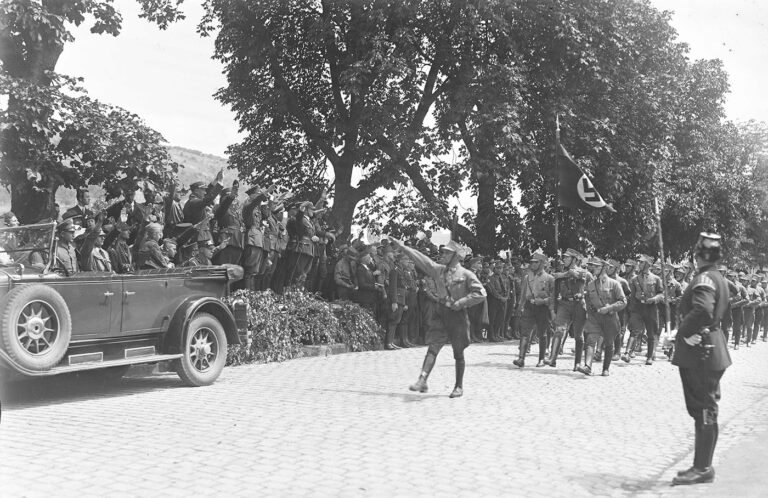
Did Hugo Boss Design The Nazi Uniforms? – Mythbusting Berlin
The idea that Hugo Boss – the man whose name now adorns expensive suits and fragrances – was the creative genius behind the Nazi uniforms suggests a terrifying collision of haute couture and holocaust – a marriage of high style and high crimes. The image is striking: a German tailor sketching the ultimate villain’s costume. But history, as usual, is far messier, more bureaucratic, and more banal than the internet memes suggest. To understand who
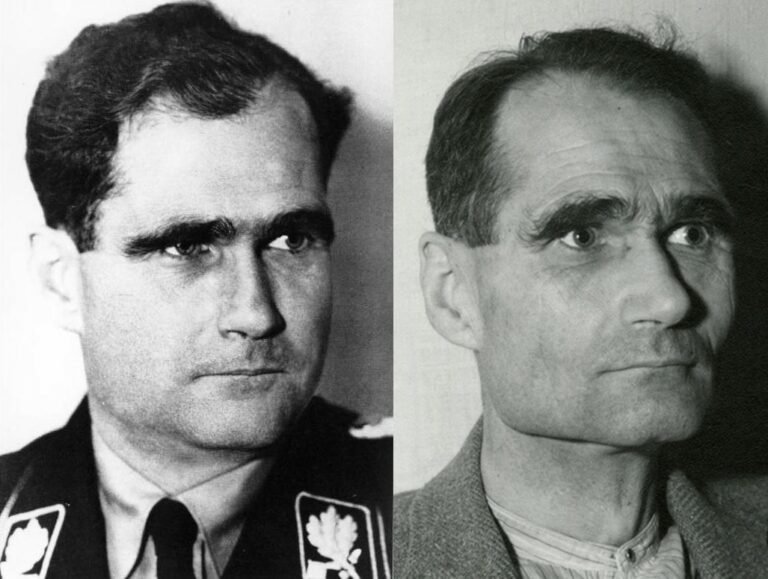
Did Rudolf Hess Really Commit Suicide? – Mythbusting Berlin
On a summer’s day in 1987, the last Nazi war criminal of the Nuremberg trials was found dead in a prison built for hundreds, yet for two decades, housed only him. The official verdict was suicide, a straightforward end to a life defined by fanaticism, delusion, and contradiction.
But the simplicity of the report belied the complexity of the man and the 46 years he had spent in Allied custody. In the meticulously controlled
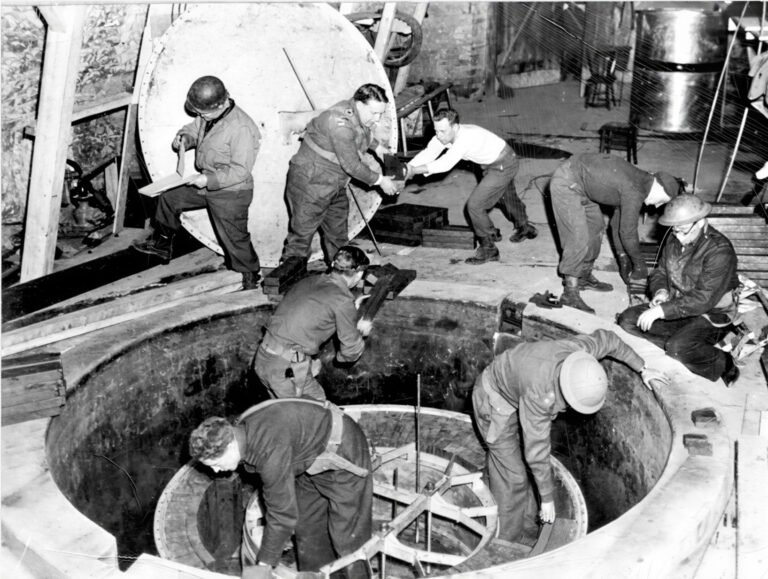
Did The Nazis Develop Nuclear Weapons? – Mythbusting Berlin
The Nazi obsession with super-weapons became so serious in the closing stages of the Second World that Adolf Hitler personally believed that such ‘Wunderwaffen’ both existed in a usable form – and would save the country from defeat. Had the Nazis managed to develop nuclear weapons by 1945 – the outcome of the war would surely have been different. But how close were Hitler, Himmler, and his henchmen to developing an A-bomb?

Did The Nazis Invent Decaf Coffee? – Mythbusting Berlin
Persistent rumors claim that Nazis preferred their coffee anything but pure, leading some to wonder if they might have influenced the development of decaffeinated coffee. Although decaf was already widely available across Europe by the mid-20th century, speculation continues: could the Nazis really have played a role in popularizing—or even discovering—this caffeine-free alternative, or is this simply another caffeinated conspiracy cooked up to sensationalize an ordinary historical detail?

Did The Nazis Invent The Bicycle Reflector? – Mythbusting Berlin
The fruits of wartime ingenuity are plenty – so many, in-fact, that it has become somewhat of a worn cliche that as the guns start firing the innovators get to work, often solving problems while providing more problems for the enemy to overcome.The kind of progress that results in the production of newer improved, more lethal weapons, such as to increase the chances of victory.
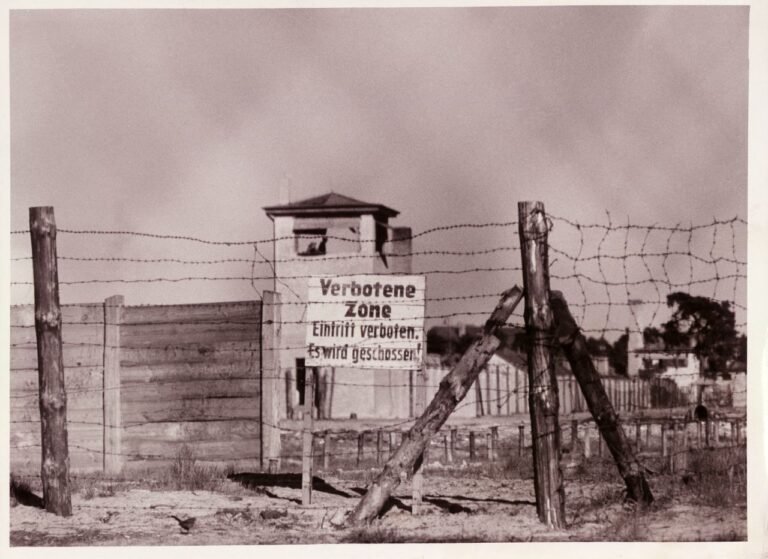
Did The Nazis Run The Largest Counterfeiting Operation In History? – Mythbusting Berlin
During the Second World War the Nazis masterminded an astonishing plot to destabilise Britain by flooding its economy with counterfeit banknotes. Crafted in secret by concentration camp prisoners, this forged fortune became the most ambitious counterfeiting operation ever attempted. But was it history’s largest? Dive into the extraordinary tale of Operation Bernhard,
rife with deception, survival, and intrigue—revealing the truth behind one of the Third Reich’s most audacious schemes and its surprising legacy.
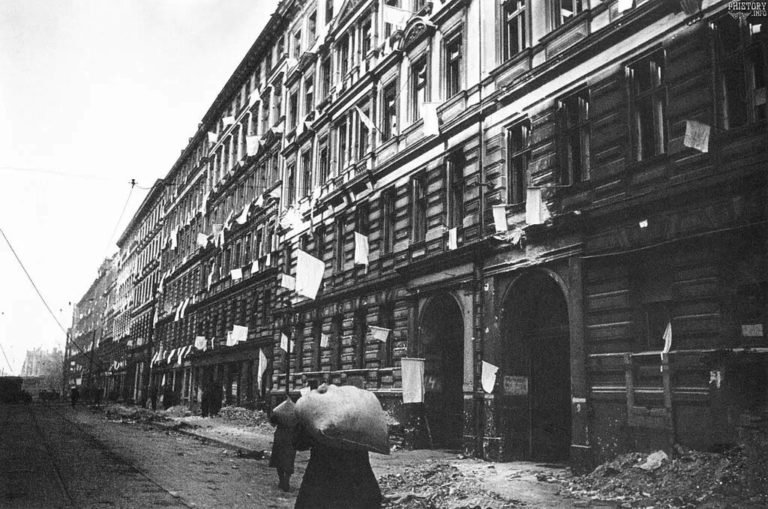
Did The Second World War End In Berlin? – Mythbusting Berlin
When is a war ever truly over? When the last shot is fired in anger would seem like the best measure. Rarely, though, is it possible to gain insight into such a moment.
Remarkably, a record still exists of such a moment at the end of the First World War on the Western Front. A seismic register and recording of the last belching battery of British guns firing artillery across no-man’s-land, followed by a profound
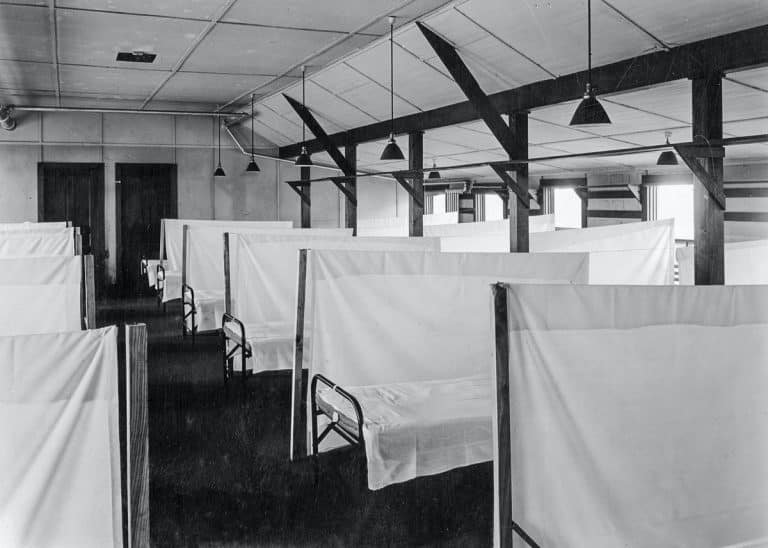
Did The Spanish Flu Pandemic Help The Nazis Take Power? – Mythbusting Berlin
The devastating Spanish Flu pandemic of 1918-1919 struck amid Germany’s post-war turmoil, compounding social instability, economic hardship, and widespread political disillusionment. Could this catastrophic health crisis have indirectly paved the way for Nazi ascension? While often overshadowed by war and revolution, the pandemic’s profound psychological and societal impacts arguably contributed to the perfect storm, enabling extremist ideologies—including Nazism—to gain popularity and ultimately seize power in a fractured Germany.
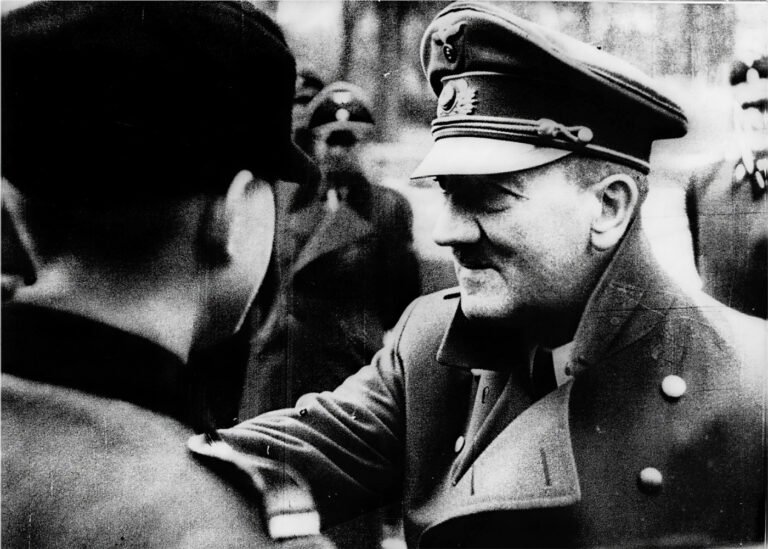
Have Adolf Hitler’s Remains Been DNA Tested? – Mythbusting Berlin
In the smouldering ruins of Berlin in 1945, the world’s most wanted man vanished. Did Adolf Hitler, as official history attests, die by his own hand in the Führerbunker? Or did he escape, fuelling a thousand conspiracy theories that have echoed for decades? For years, the Soviets claimed to hold the gruesome proof of his death: a skull fragment and a set of teeth, locked away in Moscow archives. But in an age of definitive
How Did The Nazi Concentration Camps Differ From The Soviet GULAG?
The Nazi concentration camps and Soviet Gulag system have often been conflated in popular imagination—twin symbols of twentieth-century totalitarian horror. Yet the two systems operated on fundamentally different principles. One extracted labor to fuel industrialisation while accepting mass death as collateral damage; the other evolved into purpose-built machinery of genocide. Understanding these distinctions isn’t merely academic—it reveals how different ideologies produce different atrocities, and why Germany and Russia reckon with these legacies so differently today.

How Long Did It Take To Build The Berlin Wall? – Mythbusting Berlin
It is one of the most enduring images of the 20th century: a city divided overnight. The popular narrative tells us that Berliners went to sleep in a unified city and woke up in a prison. While the shock of August 13th 1961, was very real, the idea that the ‘Wall’ appeared instantly is a historical illusion. The physical scar that bisected Berlin was not a static creation, but a living, malevolent beast that evolved

How Many Assassination Attempts On Adolf Hitler Were There? – Mythbusting Berlin
Nazi leader, Adolf Hitler, projected an aura of invincibility, a man of destiny shielded by providence. But behind the carefully constructed image of the untouchable Führer lies a story of constant threat, of bombs that failed to detonate, and errant bullets that missed their mark. Unearth the hidden history of the numerous attempts on Hitler’s life as we explore the courage of those who tried to change the course of history and the devil’s luck
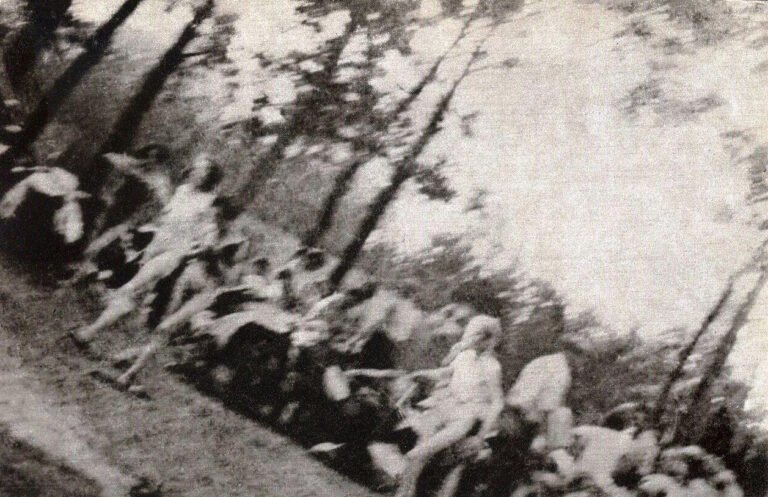
How Many Jews Died In The Holocaust? – Mythbusting Berlin
The answer to the question posed of how many Jews died in the Holocaust is a simple one: too many. That merely one death was an unforgivable obscenity is a fundamental and necessary realisation in understanding the capriciousness of this unparalleled racial genocide. To comprehend, however, the full number of Jews murdered in Europe by the Nazi regime in the 1930s and 1940s is a detective story of epic proportions: the evidence overwhelming, multifaceted, and
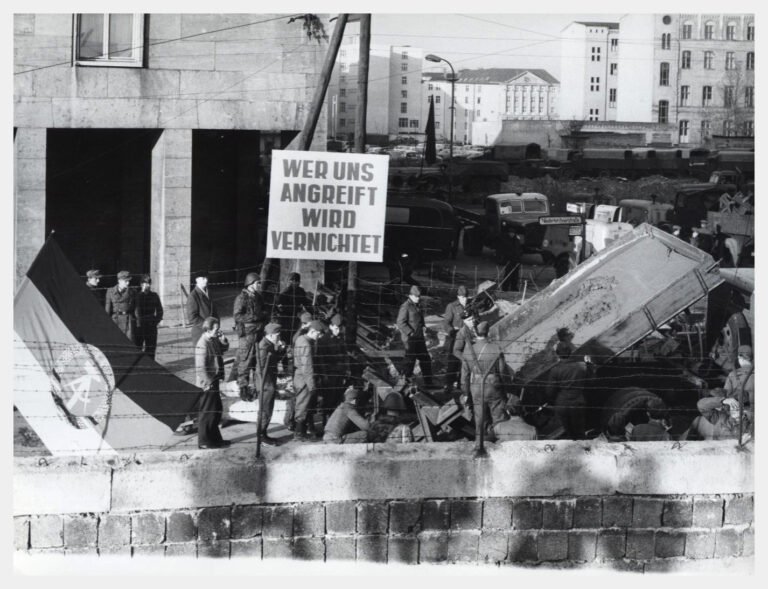
How Many People Died Trying To Escape East Germany? – Mythbusting Berlin
The image of the Berlin Wall is seared into our collective memory, a concrete symbol of Cold War oppression. We think of the daring escapes and the tragic deaths of those who failed. But that well-known number is only a fraction of the truth. The story of those who died trying to escape East Germany is far broader and more complex than most imagine, stretching along a thousand-kilometer border and out into the cold waters
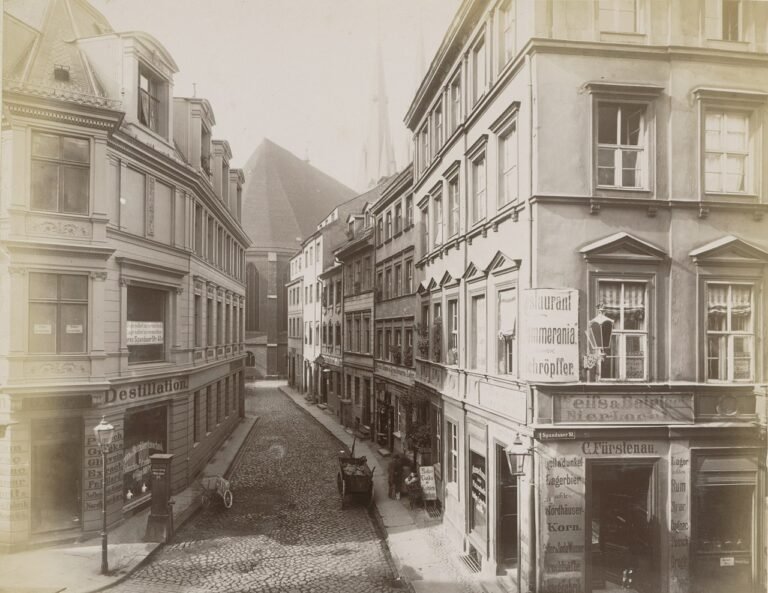
How Old Is Berlin? – Mythbusting Berlin
A relatively new arrival in Europe, Berlin is over 1000 years younger than London, nevermind Rome or Athens, Jerusalem or Jericho. Just how old is Berlin though?
A question fraught with false assumptions and distortions – that has more often than not been answered with propaganda as it has with the cold hard truth.



